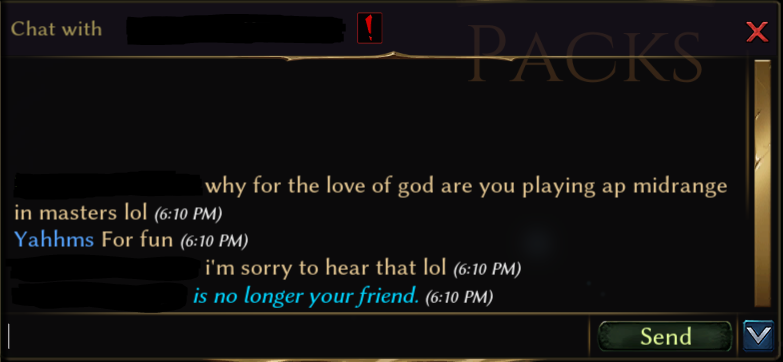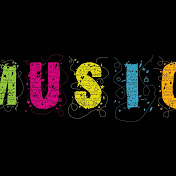Small talks; Casual conversation; in English
Activities (Lesson Plans)
- Compliments in English
- Greetings in English for Chinese EFL Handouts
- Greetings in English for Chinese EFL
Break Room Pragmatics
Practical Ideas & Resources
Resources in this section curated by: Maggie Mitteis
Break Room Expectations
This nuance description of items in the break room explains both why those spaces are unique and also why the items found in this space are important. In examining these items, learners can also understand what is both normalized in this space and how one can successfully interact within it.

Micro-Managing

This image introduces the phrase "micro-managing." It also further connects the phrase to the break room context and expectations that can be placed on that space, but not accepted by everyone.
Breaking the Rules

Here we see an individual who has stepped outside of break room norms. The way that he has chosen to utilize the space demonstrates that there is a distinct code of conduct for the space, even if it is unsaid.
A Break Room's Purpose

This image is intended to facilitate a conversation around the expectation in a shared space. Specifically, this image demonstrates that not everyone agrees on those expectations--they are something that are both location and culturally specific and collectively agreed upon.
Food & Stockpiling
In this clip, we see a large overstepping of break room expectations surrounding food. Dwight's stockpile of food clearly makes his officemates uncomfortable. Each person displays their discomfort in an indirect form, each wanting him to cease the stockpiling, but not saying so directly.
Acceptable and Unacceptable Behaviors
Birthday Parties

Attending work-place birthday parties is a necessary part of integrating into office culture. Here, learners can observe a colleague stating clearly why he does not enjoy these events. In this interaction he both chooses not to attend and alters his relationship with his coworker and possibly other further cake-related events.
Severity of Office Interactions

This comic demonstrates the severity of office interactions. It clearly demonstrates that there are occurrences in which coworkers use the break room as a place to "take a break" from their colleagues.
Consequences of Violating Office Norms
Though very heightened in presentation, the saga of Ross' sandwich demonstrates the consequences of violating office norms and accepted rules regarding the community refrigerator.
Possible lesson ideas: Ask students to write a note that will protect Ross' sandwich.
Creating Unity
Just as pragmatic norms can create division, this clip shows how they can create unity. In this show, an office group attempts to renegotiate norms around available snacks and the turn taking/shutting out of another colleague that follows.
Who Stole Joe's Gelato?
Here we see an example of violated norms in utilizing a shared office refrigerator. Though this is a heightened scenario, the clip offers students a glimpse into how relationships can be both created and violated in how the break room space and items stored there are managed.
Signs & Symbols Found in a Break Room
Expectations - Imperatives

This sign conveys the expectations of the space and how to keep order among colleagues. It's very straightforward in its expectations for maintaining the status quo. It can be used as a tool for teaching imperatives.
These "dos" and "don't" clearly assert what is acceptable microwave usage. In order to build and maintain good relationships in the break room space, microwave users can follow these steps.

Refrigerator Usage

This presentation of a break room rule and refrigerator usage is more aggressive than the previous signs. The presented consequences of violating accepted rules are much stronger. If one fails to follow the stated rules, one will quite literally lose one's lunch.
The Dirty Microwave
In this scene of “The Office”, Pam is upset that someone in the office has made a mess in the microwave and will not clean it up. A workplace microwave (or refrigerator, for that matter) doesn’t “belong” to anyone. If you find a microwave in a home is coated inside with food splatters, you’d think, “Ewww! He’s really a slob!” But the work microwave doesn’t reflect on any one person. Some people count on others having a lower tolerance for a mess than they do.
An Individualistic Approach

This sign shows a more aggressive and individualistic approach to break room discourse. Here an individual's actions in a shared space characterize the individual, not the collective. This also creates a space where each person is responsible for themselves, rather than the habits of others.
Expectations & Humor

This sign depicts a more humorous look at expectations. Attributing dirty dishes in the sink to harming kittens appeals to the break room users' empathy, especially those self-identifying as a "nice person."
Double meaning of “Date”

Even though they are necessary, abiding by office norms can feel silly. This note seeks to mock the expectation that all items be "dated”, as “to date” can mean multiple things, such as “to put the date on something” or “to go out with”.
Not to Touch

Here, the collective is pushing back on the expectations of one individual. By adding another sign below the original requesting not sharing one mug, the group might be asserting that the first request is outside the shared norms and expectations, or they might be joking about the literal meaning of the word “touch".
Break Room Small Talk
Small talk often involves many safe, very surface topics. This image provides a humorous representation of which topics are safe and how these topics can be rotated in ordinary conversation.

The Weather

Discussing the weather is both a neutral topic of conversation and an expected form of "safe" conversation that can occur in a shared break room space. Learners can analyze this image and discuss if understanding the weather or filling the silence is more important.
Commuting

"Safe" topics for small talk--especially with people who you do not know well--include commuting. This image demonstrates how to engage with a colleague while waiting and that it is both accepted and expected for the conversation to remain at a surface level.
Can you believe that guy?

"Can you believe that guy" is a phrase that can be utilized in both a positive or a negative connotation to comment on another's behavior.
testing test
Compliments in American English
Practical Ideas & Resources
Resources in this section curated by: Miranda Burrows, Niki García-Holmes, Ailsa Li, Ryane Sergent

Read Online Reviews
Reviews of restaurants, hotels, and shops can be found on Google Maps, (where this review for the Agate Motel was found), Yelp, Amazon, NextDoor.com and many other sites). These sites show contextualized written compliment language that can serve as models for learners.
Learners should note that non-anonymous and semi-anonymous reviewers (such as those found on AirbNb, Etsy, eBay, and Depop) may use more complimentary language and downplay minor negative experiences in order to maintain their own online reputations. Non-anonymous reviews decrease the amount of power reviewers have, since receivers of the reviews (sellers or business owners/managers) may retaliate in response to negative feedback (by leaving negative feedback of their own!).
Such review sites are prime examples of how compliments tend to be exaggerated in American English. The example review here makes use of the common "I/we love + noun" syntactical construction identified by Herbert (1986): "My family loves this motel!" The phrase "...this is the place to be!”, the use of the emphasizing adjective "super" seen in "super friendly," and the liberal use of exclamation points, are all typical of positive reviews in American English.
Podcasts (such as ‘Happier’ and ‘Wonderful’)
Any podcast hosted by American English speakers could be a place where one might hear compliments used "in the wild." Language learners can listen on Apple, Stitcher, Audible, etc. The following are two podcasts that discuss the bright side of life - and where one will be more likely to hear compliment language in American English.

Happier is a podcast about how to be happier, more creative, and more productive: the hosts share life hacks (various tips that they recommend to improve listeners' lives), product recommendations, and enthusiasm for their favorite books, TV shows, and so forth.

The hosts of Wonderful! describe their podcast as being "...for joyful and enthusiastic people that like hearing about the passions, big and small, of other people," Topics vary widely. Wonderful! sometimes uses adult language, so it is not recommended for young learners.
While investigating the compliment language used by the hosts and building their own lexica, language learners should also make comparisons with languages and cultures they know. They might also consider broader cultural questions like: Are the podcasts discussed above examples of a helpful brand of American optimism? Or do they reflect a culture rife with toxic positivity? Learners who want to explore this even further might read Derek Thompson's piece for The Atlantic, The Dark Side of American Optimism (And the Bright Side of Rising Pessimism About the American Dream).
TikTok as Teacher (A Collection of 7 Compliment Videos)
TikTok is an excellent resource for exploring written and spoken American English compliment culture in digital spaces, especially for young adult and teen language learners. Like case studies, individual TikTok posts won't always contain generalizable cultural or pragmatic information, but very often, trends can be seen and general inferences about American English culture can be made, especially when viewing videos in the aggregate. Exploring the hashtag #compliment is a good place to start.
Here we see a young woman (@amyywoahh) in a shop acting as herself and also playing the role of her mother. Amy gives many compliments to her "mother" which amount to disingenuous flattery, used in hopes her mother will be in such a good mood that she will buy her gifts. Issues of power, closeness, and imposition underlie the flattery in the video. Parents, by default, have power over their children. Many (though not all) parents and children have a close personal relationship. The power dynamic makes it tricky for a child to request gifts from a parent without imposing. At the same time, the child may rely on the parent for financial support, and if the relationship is close, the child may exploit that closeness to get what they want by complimenting the parent. The complimenting in this video is insincere, but is done good-naturedly, and with humor. The video is also a good model for learners who want to practice intonation while complimenting, and learn about emphasis connectors (e.g., "so" and "really" seen in the video) which can be used to strengthen compliments.
GENDERED COMPLIMENTS ON SOCIAL MEDIA: YOUNG WOMEN TO YOUNG WOMEN
This TikTok shows a list of compliments that a traditionally-feminine-presenting young woman suggests giving to other "girls" (we can infer that by "girls," she means young women, not children, due to the language in her list). It's an excellent example of how the language used on social media, in text messages, and in other informal digital spaces, can be vastly different from the language that learners are taught in classrooms.
The first compliment, "face tutorial???" suggests that the receiver of the compliment is so beautiful that the person speaking would like instruction on how to look like her. To correctly interpret this compliment, a learner would need existing schema for American English "make-up tutorial culture," a longtime YouTube trend where people make videos showing other make-up wearers new ways to apply cosmetics. "Teach me" is similar, as it means, "teach me to be just like you."
The spelling error in the 6th compliment of the first column (where the possessive "your" is written instead of the contraction "you're") is pervasive in online spaces, even among expert speakers. The abbreviation "mf" is a common acronym representing solidarity-building profanity; the acronym is used, rather than the spelled-out word, for brevity-- but it also softens and deflects the vulgarity.
Other compliments of note: "wowowow" is shorthand for "Wow, wow, wow!" to indicate the person giving the compliment is in awe of the receiver. The repetition of the word "wow" adds emphasis to the compliment. "Every feature is literally in perfect proportion" shows how the word "literally" is no longer used...well, literally! At least not in American English. The word is used to add emphasis to whatever is being said, and in the case of the compliment depicted here, it acts as a synonym for "truly." "Holy moly" is an oath-like interjection, used to show surprise, that is commonly used as a compliment. It is synonymous with "wow."
Gendered Compliments on Social Media: Young Men to Young Men
A counterpoint to the "women complimenting women" video, @joshwoshyy using the #spreadkindness hashtag to assert that "guys" (masculine people) should compliment other guys. Learners might compare this video to the two above. What is different about the words used to give compliments? What is different about the intonation? In American English, the word "bro" (short for "brother,") is used sometimes by men - particularly young men - as a solidarity-building device. The inclusion of profanity, for instance, after saying the words "I love that" is used to give a masculine edge to language that might otherwise feel emasculating for the speaker.
The word "actually" is considered a compliment mitigator in American English. Not everyone agrees, but many do NOT like when the word "actually" is inserted into a compliment. As shown in the video, language like "You're actually funny," can signal that the speaker was surprised that the receiver was funny.
Another example of how some American English speakers take offense to the "actually + compliment" construction was witnessed by an intern to an expert world language teacher. A student waved to the teacher as she left the room at the end of class and said, "Wow, I actually learned something today!" The teacher became furious, as she interpreted the comment to mean that the student had never learned anything from her before.
Have you heard people preface compliments with the words, "Oh my god"? Utterances like "Oh my god, I LOVE your shoes!" and "Oh my god, this is the best coffee ever!" are common, but "Oh my god" is also used (mainly by women or female-identifying people) to preface the receipt of a compliment. The "Oh my god" implies that the receiver of the compliment is surprised by the compliment, and is thus a way to indicate humility just before receiving the compliment with a "thank you." Language learners might try adding "Oh my god" before their thank yous - or before their compliments! - in English, to sound more natural.
What Americans Actually Mean (blog post)

The first cartoon from Buzzfeed's Crystal Ro pokes fun at the American tendency to be hyperbolic when complimenting and praising. Words like hilarious, awesome, amazing, best greatest, and other superlatives are used to describe people, places, and things that are often only slightly above average-- or at least "not terrible."
Identifying and understanding this norm can help language learners build solidarity in their communities. If everyone else at the business lunch says the pizza was "great" or "awesome," but the language learner says "it was OK, but maybe a little too salty," they may be perceived as having an unusually negative attitude. Language learners always have choices - e.g., perhaps you wouldn't mind if your coworkers thought of you as having a negative outlook - perhaps you self-identify as a realist! But learners should understand the rules (cultural and pragmatic norms) before they go about breaking them.

Ro's cartoon illustrates that words that seem like they are compliments should not always be taken at face value. Language learners should pay attention to delivery, including intonation, context, and facial expressions, when determining whether an American English speaker really does find something interesting. Did you just tell someone the details of a baseball game you attended, when you know they hate sports? Don't be surprised if they say "That's interesting," and quickly change the subject.
How to Flirt with Emojis (listicle)
Yerin Kim's listicle in Seventeen Magazine, How to Flirt Like a Pro, gives suggestions for complimenting and flattering romantic interests using emoji. The fire and chili pepper emoji are used to indicate that the receiver is good looking, while the drooling face implies that the receiver of the message is as wonderful as a meal that would make one salivate.

These emoji are used by digitally literate American English speakers of all ages - not just teens and twenty-somethings. What's important for learners to note is that the emoji, like any overtly flirtatious or romantic language, are expected to be used judiciously. If such emoji were sent to someone who had already rejected the sender's advances, the emoji would impose upon the receiver. If the sender and receiver were already in a close relationship, or had a history of consensual flirting and attraction in digital or in-person spaces (a form of casual closeness), it would not be surprising to see the emoji depicted above. The 🥵 (sweating red face) emoji is another used by American English speakers to indicate romantic interest.
Furthermore, many language learners are surprised to find out that the peach and eggplant emoji should not be taken at face value when texting in American English, since they have overtly sexual meanings. While it can be uncomfortable for teachers to discuss these issues, it's important to ensure that language learners have the age-appropriate digital literacies they need to avoid embarrassment (e.g., from communicating unintended meanings) in target-language communities.

Complimenting in Finland vs. Complimenting in the U.S. (blog post)
Katja Presnal, who moved to the U.S. from Finland, writes about the differences between Finnish and American compliment cultures. She describes how she experienced culture shock when she discovered that complimenting is a typical feature of small talk in the U.S., and the way she felt when her fiancé's family complimented her skin and hair as part of small talk. In Finland, custom dictates that you would ask a young woman her opinion about politics or controversial issues when meeting her for the first time.
What is particularly interesting about Presnal's account is that she suggests she felt devalued by small talk culture in the U.S.-- at least before she understood that very superficial topics are expected. As Presnal learned, the American custom is to only discuss politics, religion, money, and controversial issues in +solidarity relationships. Language learners may choose to discuss such topics with people they aren't close to, but if they do, they should know they are deviating from social norms.

American vs. German Compliment Cultures (blog post)
Courtney Tenz, an American who has spent more than a decade living in Germany, describes her difficulty adjusting to German-speakers' approach to complimenting. In Germany, the absence of criticism is perceived as an implicit compliment, whereas in America, people may grow concerned if they aren't receiving regular compliments and praise. She analyzes the perception that complimenting in American English is superficial and based on flattery, and compares that with the perception that Germans are more truthful when they do give compliments.
The resource compels learners of American English to ask themselves: In what ways is complimenting in my country of origin similar or different from complimenting in the U.S.? How do I know?

Catcalls =/= Compliments (blog post)
In Natalie Cortes's blog post Catcalling is Not a Compliment, written for The National Organization for Women, the author considers the boundary between catcalls (comments, whistles, or other unwanted attention, typically directed at female-identifying people on public streets) and compliments. The resource explores the issues at play when men, who are typically in +power positions, direct unwanted compliment language at strangers- typically women and girls who are then imposed upon to respond or react.
The resource will help learners distinguish between catcalls and compliments, consider gender as it relates to power and imposition, and recognize that not all "complimentary language" is welcome. Per the image, American English learners should take note: telling a woman you don't know to "smile" (usually followed by some form of "because you're beautiful") could be considered catcall language.
RESOURCES FOR TEACHERS

Politeness | YouTube Video
In this short video, the speaker prefaces their definition of “politeness” as “appropriate to context.” The speaker transitions to a contrast between invitation requests of a Midwestern native speaker of English and a Colombian native speaker of Spanish to convey how people emphasize the sincerity of their invitations differently with the same goal in mind. As a teacher you could use this with scaffolding to introduce the concept of comparing and contrasting initiating, accepting and declining invitations to invite your students to compare and contrast their own decisions in similar encounters. As a language learner, this is a tool to brainstorm and reflect on how and why you yourself would choose a certain strategy in a real-world context when you encounter an invitation or want to invite someone to your own event.

Chat Stations for Class Discussion | YouTube Video
This resource pulled from the Cult of Pedagogy website proposes chat stations, which are less time-intensives for teachers to set up as opposed to other types of in-class stations. The goal is to make the setting more informal and for students to engage in conversation with each other about a “chat station” which can be as simple as posting a few posters around a classroom and getting students to discuss the visuals and content on the posters as it pertains to other knowledge they are attaining in class. If a teacher wanted to implement this approach with teaching the pragmatics of English L2 compliments, it would be worthwhile to explore memes to use as conversation starters, advice columns on how to use compliments while dating, and the concept of the “humble brag” as a pitfall for talking about personal achievements in a personal, professional or academic setting. I particularly like the idea of linking the chat stations to the Grammarly article also posted here as a resource, “What is Humblebragging, and How Can You Avoid it in Your Writing?”

How Dialogue Journals Build Student-Teacher Relationships | Blog Post
Potentially adaptable for adult education settings, this article found on the Cult of Pedagogy website features the concept of a dialogue journal in the K-12 setting. The teacher who implemented it initiated written conversations with her students to get to know them better and for them to get to know her better. The goal was to make sure learners could bring up any challenges they are facing in class or outside of class as well as showing a genuine interest in their passions and interests as individuals. The journals really helped the teacher prepare and reflect on how to tailor her class for her students and what content to review and recycle more. It also helped her build a better interpersonal relationship with her students.

A Strength-Based Approach to Teaching English Learners | Blog Post
In this Cult of Pedagogy article by Laura Lenz, the author emphasizes that when K-12 English learners shine, their teachers and fellow students should validate and point out how bright they are shining. English learners are some of the future leaders in our communities, and the approaches she speaks about here emphasizes the unique value their perspective and their experiences bring to the classroom. She asks the reader to consider the value in looking beyond benchmarks and standardized tests and seeing the inherent value in seeing students strengths before commenting on their challenges.

Giving and Accepting Compliments in English | Blog Post
If you are looking for a lesson plan outline to adapt for teaching ESL/EFL learners about giving and receiving compliments, look no further! As a complement to the activity that our team designed, this is an ESL blog for teachers and features a list of appearance, work, talent, food and indirect compliments that are common in English to include in a lesson plan. It also has explicit explanations of responses people generally say when given a compliment.

6 Ways to Pay a Compliment in English | YouTube Video
In this lovely and quirky ESL instruction video, two teachers of English--a woman from Great Britain and a man from the USA introduce useful terms, collocations and expressions that often come up when people express and receive compliments in an informal setting. As a language learner, this is good for many proficiency levels. You can turn on subtitles and slow down the speech speed with the settings on the YouTube video.

Conversational English - Giving Compliments | YouTube Video
This video introduced three basic formulaic compliments structures in American English. The author used a simple story of friends coming visiting her new house and compliments on it. It is suitable for novice to intermediate level adult learners to enhance their conversational English. In this video, the author expanded from the examples to teach learners how to use the three formulaic compliments which is “nice +a noun”, “I really like + an item” and “what a great + a noun”.

Complimenting Someone - Easy English Conversation Practice | YouTube Video
This is a 2 mins video of easy pragmatic conversation practice in English. It provides 6 example dialogue across all aspects of daily life, such as compliments to a girl’s haircut or her bag. Or praise someone’s expertise like “you are a great skier/ incredible pianist.” This video could be used in any English class with varied proficiency learners. The teacher could either pick some of the dialogue to introduce to the students, or the teacher could expand it to a longer conversation for higher proficiency learners.

The Compliment Song for kids! What is a compliment? How can you give one? | YouTube Video
It’s a four mins song about teaching compliments to lower ages learners with novice proficiency in ESL context. The rhythm is simple and the sound is quite melodious. The song started with compliments on someone’s appearance such as “ I like your hats/ eyes”, continuously, the teacher upgraded the compliments to someone’s trait such as “I like that you are helpful.” In the end of the song, the singer also provides the basic responses to compliments. It could be an authentic and entertaining material for teaching English to kids.

Giving compliments: 3 examples | YouTube Video
It’s three audio clips about people giving compliments in different situations. Specially, it represents diversity among plus/ minus distance and power in pragmatic conversation In English.The pacing of all three dialogues are fast as English native speakers, it also includes some American culture elements such as the “Old Navy” clothes brand. It maintains the authenticity of the teaching material but it’s also limited the scope of usage to advanced proficiency of adult English learners.
Giving and receiving compliments | Example Lesson Plan
Download Link: http://www.inclusivetoolbox.org/Tool8_mdde631-inclusiveles.pdf
It’s an example lesson plan focusing on practicing giving and responding to compliments in English. It is for intermediate English learners with no specific age group. This lesson plan provides varied drills and activities that are able to be used in the physical classroom. At the end of the lesson plan, also included some sample conversation practice scripts. I’ll recommend this lesson plan as a reference to any future teachers who wish to teach a class about compliments.
RESOURCES FOR LEARNERS

Learn the Top 10 English Compliments You Always Want to Hear | YouTube Video
The YouTuber provided top 10 English compliments that are pleasant to most people. There are also some instructions about where and how to use these compliments and the author discusses why she likes these compliments and why it's nice to say to someone else. From my perspective, the teacher could use these example compliments in a discussion activity and let students share their favorite ones and why. This video will fit well in intermediate to advanced English classrooms for adolescent and adult learners

40 Heartfelt Thank you Messages for Colleagues | Blog Post
A general and unabridged material, these thank you messages are designed to give readers advice and ideas for how they can convey gratitude in a note or in person for the people that work alongside them. Intended for high school or adult learners, this material could be a great look inside the cultural expectations of how to express thankfulness briefly and professionally although it is only a sample list of potential compliments and thank you messages.

Example Thank You Messages for Your Boss | Article
In tandem with “The 40 Best Thank You Messages for Colleagues,” this article is designed for a trickier plus power situation--how to express thankfulness to a supervisor or boss. In adult academic settings, this information could be helpful to job seekers or people striving for better interpersonal relationships with professors or other people who have seniority rank in various contexts.

How to Compliment Someone in English | Blog Post
This article is from Kaplan International, an organization that offers lessons in several different languages, including English. The short article provides several examples of sentence structures typically used for giving compliments in English. These sentence structures allow learners to personalize the compliments they give and make them specific to a given context. Additionally, this article continues with a short description of several types of compliments: physical appearance, performance, personal qualities, and possessions. This article is great for introducing the topic of compliments to learners because it is short and to the point.

50 Nice Things to Say to a Friend | Blog Post
This great article collected 50 compliment sentences that are able to say to friends. It covers most aspects of giving compliments such as praising someone’s appearance like ”I like your smell” and complimenting someone’s inherent traits like bravery or inspiration. If the teacher wants to use this article as one of his/her teaching material, he/she might simply print it out and give it to students. The teacher could let students practice these sentences in pairs like role play. Or students can have a short group discussion that talks about their favorite compliments.
EXPERT SPEAKER RESOURCES

What is Humblebragging, and How Can You Avoid it in Your Writing? | Blog Post
This article from Grammarly is geared towards best practices describing your own achievements in the workplace. In this authentic material that could be adapted for a lesson plan or homework material, the author introduces the concept of a “humble brag” and how you can carefully phrase statements to avoid the misstep of using one in a situation where your intent is to be truly humble and relatable. This material could also be especially helpful to start a conversation on the ubiquitous nature of humble brags on social media for both language learners and educators.

100 Positivity-Boosting Compliments | Blog Post
This article is from Very Well Mind, a psychology website focusing on mental health and self-improvement. It is a resource for expert speakers who are looking to better themselves and the ways in which they interact the world. This article is organized by type of compliment (positivity, personal traits, intelligence and creativity, accomplishments, and personal relationships), and gives examples of very common compliments, such as "You light up the room" or "You're one of a kind." This would be a great resource for learners because it is authentic, so it gives great examples of real-world compliments that would by used by expert speakers of English. It also gives an explanation on why giving and receiving compliments is good for your mental health, which can start a conversation in a classroom about the increasing importance and normalization of mental health in English-speaking cultures.

10 BEST Compliments - Conversation Starting Compliments For Both Men & Women | YouTube Video
This video will be great for advanced adult learners, specially it focuses on compliments among gender differences in a casual speech or a workplace. The only problem of this video is there is a 30 min sponsor advertising introduction, it’s unrelated to the compliments content. If the teacher wants to use it as a teaching resource, he/she might need to cut that part or just use the script.

10 Proven Compliments to Give a Girl That Build Attraction | YouTube Video
This video is from a female perspective to teach others how to compliment a girl. Continuing with the gender difference, scholar articles represent the women usually like to hear compliments about their appearance. But when people praise on that part, they need to be careful on their words because sometimes it could be offensive. I would recommend this video as an extra resource of self-learning for advanced adult learners who wish to learn more about giving compliments pragmatically in their life.

Title | Type

This image is a meme, or a humorous image that is spread in online spaces, often with variations. This meme includes a screen grab from the movie Labyrinth, which was released in 1986 and stars David Bowie. While it is not necessary to know where this image originates to understand the meme, it can start a conversation on classic American film and its impact throughout time. This meme discusses the awkwardness of receiving a compliment. In the United States, it is not uncommon to not really understand the best way to receive a compliment. There is a wide variety of accepted social norms for receiving compliments, from expressing gratitude to denying the compliment altogether. Since there is no set expectation, even expert speakers can get confused about how to respond when complimented.

Family Guy: Women vs. Men | YouTube Video
This video clip is from Family Guy, a popular TV series in the US that began in 1999 and has almost 20 seasons. This animated sitcom often makes light of controversial topics in an effort to be funny. This clip discusses how gender can affect the intention of a compliment. It shows women giving each other "backhanded" compliments, or insults that are disguised as compliments. It is not uncommon to hear backhanded compliments in American TV and movies, particularly between women. This is due to women being traditionally expected to "save face" and maintain relationships that look friendly and positive to other people, even if that is not how they really feel towards each other. This stereotype is overexaggerated in the media, and does not reflect the reality of friendships between women in most cases. This video would be a great resource for initiating discussions on what genuine and deceptive compliments look like, and how one should react to both.

Men React to Being Called Handsome | YouTube Video
This video clip is from a peculiar source, a YouTube channel named "Attract Great Guys," a channel targeted towards women to help them find "high quality men" for relationships. While this in and of itself would be a great way to begin a discussion on social norms in English-speaking cultures, the video shown here shows several random men being complimented on their physical appearance by a woman and their varied reactions to the compliment. A few men avoid the compliment, others accept it, and some reject it entirely. This resource could help learners visualize how varied the social norms are in terms of receiving compliments. It could also start a discussion on what type of response they would be most comfortable with and how that response would be received in an English-speaking community.

Women React to Being Called Beautiful | YouTube Video
This video depicts women reacting to being complimented on their physical appearance by another woman. This could be compared to the previous video, as it also shows variations in compliment responses (avoiding, accepting, and rejecting). This video could also start a conversation on the gender dynamics of compliments: Is it easier for a woman to accept a compliment from another woman than to accept one from a man, and if so, why would that be the case? We can also analyze the origin of these two videos. The first one is from a dating site, and this one is from a women's magazine company. Would these sources have different motivations for the same type of video?

Monster's Inc. Clip: Tender, Oozing Blossom | YouTube Video
This video clip comes from a beloved movie in American households, Monsters, Inc. This film is an early Disney Pixar movie about monsters entering the human world in order to scare children, whose screams are an energy source for the monster world. In this clip, Mike Wazowski, needs to request something from the secretary, Roz, who is not very happy with him. In an effort to have his request fulfilled, he begins the conversation by flattering Roz with compliments that could only be appropriate in a monster world. This video could start a conversation on the different uses of compliments, such as for thanking someone, strengthening an interpersonal bond, or as in this case, making a request.

Friends Clip: I've Never Wanted You More | YouTube Video
Sarcastic compliment: “I’ve never wanted you more.”
Context of situation, tone, facial expressions → sarcasm
This video is from Friends, a popular American sitcom that ran for 10 seasons starting in 1994. The video clip shows a brother, Ross, and sister, Monica, fighting over the bathroom in an immature, childlike way. Ross' girlfriend, Rachel, witnesses the argument. After the fight, Rachel gives Ross a heavily sarcastic compliment. This resource would be useful in demonstrating how much compliments can vary in use. Like the Family Guy and Monsters, Inc. resources, this video shows how a compliment can be used in a way that strays from what compliments typically mean in interpersonal relationships.

Hey Reddit, is it OK to compliment a stranger? | Reddit Post
Reddit is a popular website that is used throughout the world to discuss all sorts of topics. This question was posed by one user nine years ago, who was uncertain whether it was appropriate to give a compliment to someone they don't know. Several English speakers contribute to the discussion with varying perspectives. The general consensus is that it is appropriate, regardless of gender, to give very specific compliments to a stranger. For example, "I like your necklace" is more appropriate than "You have a great body." The discussion would be a great firsthand look into what kind of language English speakers use and how social norms are debated even by members of English-speaking communities.

The 9 Best Things You Can Say to a Teacher | Article
This article is from Ramsey, a website that provides tools to people to help with their finances. The website also helps people with their leadership skills and personal development, which is where article fits in. The article describes the importance of teachers to today's world and how to thank them appropriately. While this isn't mentioned in the article, there are power dynamics between a teacher and a student (even a former one), so compliments should be worded carefully and are most effective if they are specifically geared towards their teaching performance. The article is very good at explaining why the examples they give are appropriate and impactful.
Digital Games in English
PRACTICAL IDEAS & RESOURCES
Resources in this section curated by: Cameron Teubner-Keller

Dead by Daylight Discussion | Discord Chat

This photo is from an online public discord server for the community that plays the game Dead by Daylight. The server allows for general chatting between members and constantly shows pragmatic strategies being used. Whether it’s slang, responding, humor, or other pragmatic features of language, it’s extensive in the general chat. General chats give opportunities for learners to observe, analyze, and extend pragmatic knowledge. Since the server is public, anyone from any community can join, leading to intercultural communication.

Funny interaction with a player after a game | Reddit Post

This post shows an interaction between players in a game-chat. One of the players uses “lol” to make his critique of another player sound more light-hearted. The following comments on the reddit post discuss the use of “lol” and other possible ways to do the same thing. One person suggests using “lmao” to really make it seem like you’re not salty when you are. Reddit posts like this are great for learners to observe and discuss pragmatic examples in the gaming context.

Why “No Problem” Can Seem Rude: Phatic Expressions | Reddit Post
This post on the r/RocketLeague subreddit showcases the phatic expressions and humor/sarcasm present in the online multiplayer game Rocket League. In this game, players use "quick chats" (pre-written short messages) to communicate with teammates and enemies. One of these chats is the 'no problem!' quick chat, which is used to maintain a positive mental (term for having a strong mental strength and not getting overly frustrated) between teammates when something bad happens. However, some players use it sarcastically when someone does something bad for humor. Through this game, players can learn about sarcasm and how to use simple phatic expressions.

Rocket League: 20 Unspoken Rules Every Beginner Should Know | Article
These "unspoken rules" of Rocket League are actually pragmatic knowledge for the digital game. Some of these rules have to do with quick chats, others have to do with different game-play strategies that should or should not be used. Following these rules is essential for avoiding miscommunication and having positive interactions with other players during game play, just as having pragmatic knowledge about a target language can help avoid miscommunication with expert speakers.

Apex Legends From Start To Finish - Real English for Gamers | Article
This article discusses how Apex Legends could be a good game for learners of English to practice language skills, as it requires consistent communication with teammates. The article is unique however, as it covers different stages of gameplay and uses popular video clips to explain relevant terminology, phrases, and language functions necessary for communication. This allows learners to have visual and auditory input and observation before analyzing and extending the knowledge they've observed.

Pragmatic Skills Series: Apps that promote social skills! | Blog Post
This website/blog for speech-language pathologists includes a list of apps/games that are used in therapy rooms for teaching pragmatic skills. The blog post prices of each and the skills they assist learners with. These apps could be helpful for learners as self-study tools or for teachers, especially with younger learners.
Greetings in English (with a focus on Chinese EFL)
PRACTICAL IDEAS AND RESOURCES
Resources in this section curated by: Elaine Sun, Lily Li

Greeting Chart: Informal to Formal | Image

This chart demonstrates the greeting from informal to formal with a column arrow. “What’s up?” and “Hey” are the most informal phrases to greet someone you know. “How are you doing?” and “Hello” is the most formal phrases to greet someone you do not know well or in the work setting. This chart is useful for students since it has a clear arrow to demonstrate its informality and formality in greeting.
The activity will be created by putting each picture (different greeting situations) in each ppt slide. In each slide, I will let students raise their hands to answer the phrase given below. I will make this chart as a handout for students to see as a reference. This chart is related to our topic since it has greeting phrases ranging from informal to formal, pictures of the greeting situations besides the greeting phrases and it has some greeting phrases other than, “Hello, how are you?”

“I’m Fine” (Outside and Inside) | Meme

“I’m fine.” is commonly answered by people when it comes to greeting. However, when people answer “I’m fine”, it does not necessarily mean that they are fine or good although often it means they are good or fine. Therefore, when someone says “I’m fine”, people, especially loved ones will ask follow-up questions like “Is everything alright?”
I will show this meme to the students 5 minutes before the end of the class during the first day. This is a meme that I would like to show to the students to make them laugh. Since many students will probably not get it without the explicit explanation, I will first explain the culture of answering I’m fine.'' in English speaking countries. Answering “I’m fine” most of the time indicates that this person is just fine or good. However, sometimes, perhaps a lot of times people will answer it just to lie that they are doing well, but in reality, they are not. After the explicit explanation, I will let students see this meme again and hopefully, they will get it. This meme relates to our topic since it relates to the “How are you?” greeting lesson, “I’m fine” is the most common greeting response and it lets students learn that not every greeting is 100% true.

Cultural Differences in Etiquette | Image

This picture shows the difference in greeting gestures between Asian and western people in a formal situation. Greeting cultures are different in different countries. It would be proper to shake hands with people in China, but bowing might be more appropriate for western people.
The teacher could give the discussion topic of “Have you ever experienced awkward greeting gesture conflicts like the situation in this picture? What are they?” Students will get into groups to have discussion on this topic based on this picture. Students could demonstrate some gesture conflicts after the discussion.

Toy Story – Greetings | Meme

This is a meme about greetings. People might feel frustrated when they need to greet many people but don’t know how to greet in the most appropriate way. Especially for ESL students. When they are beginners of a foreign culture, it will be challenging for them to greet others in that culture with the target language.
This is just a piece of interesting meme and it could be shown by the beginning of the class. Some students might panic when greeting people in their second language and actually, they are going to learn many different ways of greeting. This meme tells that greeting is everywhere and some people, even native speakers, might have the same feelings as they do.

5 Way to Say Hello: Common English Greetings | YouTube Video
This video teaches people five ways to greet English speakers: hello in person, hello on the phone, good morning or good afternoon, hi/hey/how’s it going? and hey, what’s up? It teaches people not only how to greet formally and informally, but also teaches that greeting is not only limited to “hello” or “hi”. This video gives students a warm-up on how to greet people.
This video can be used on the first day of class to introduce what the most common greetings in English is like. I will show this video after I introduce what greeting is to the students in my own words. After watching this video, students will walk around the classroom and greet their classmates with the phrases they learn from the video. This video relates to our topic because it covers the basic greeting lesson, the greeting phrases that can also be used in the college and it lets students learn how English speakers greet.

Informal & Professional English Greetings for Every Situation | Blog Post
This article talks about formal, informal, and greeting slang in English. For each topic, it has detailed discrimination about it and some taboos of greetings under this situation. The most helpful part of this article is that students will be able to have the example conversation to understand the discriminations, and to practice with peers. Also, the article labeled additional resources for audiences to explore more by themselves. It’s a really good article for students to learn the greeting and taboos.

Casual Greetings and Friendly Body Language | Blog Post
This article is talking about the gestures that people normally use in greetings. From the movie, learners always see people doing different gestures with friends when they are doing greetings. However, learners could find the explanation of gestures and how it works in daily life. This article clearly talks about the gestures in greeting with different people and under different situations. This article could give learners ideas of what they can do with gestures when greeting.

Greeting Body Language | Article
This article is about greeting gestures in world culture. Generally, gestures include hand-shaking, salute, bowing, waving, hugging, kissing, etc. For some cultures, it has some specific greeting rules so learners should have awareness of it. Although these are not included in North American culture, it is better to have the knowledge in mind for learners to prepare their greeting in later life.

English Greetings | Article and Activity
The article has clear guidance of greeting in several steps from different aspects. In this article, the highlighted part for learners is the Introduction to other people. Normally, the textbook or teachers always talk about greeting one on one and merely talking about group greetings. However, in real life, we always have situations of introducing other people, and this is a common social event in school life. Also, the cultural tip part is interesting. It mentions that “It’s polite to address them as Mr / Ms until the situation becomes more informal. “This is totally different from learners’ own cultural background. So students will be able to have this knowledge and bring it to the class to talk about it.

Learn English - Greetings in English, how to Answer the Question "How are you?" | YouTube Video
This video introduces people on how to answer the question “How are you?” Oftentimes, people answered, “I’m fine, thank you.” However, this video teaches us how to answer it other than “I’m fine, thank you.” People can also say “Pretty good!” or “I’m fine”, if people do not feel good, they can say “Not so well.” When people are learning English as a foreign language, they often find it difficult to answer the sentence “How are you?” properly. Therefore, this video is useful for students to watch and include it as part of the instruction.
On the first day of class, I will use this video to teach students how to answer “How are you?”. I will show this video at the beginning of the class. After watching this video, students will walk around the classroom and ask “How are you?” and they will have to answer the phrases they learned from the video. This video relates to our topic because it covers the basic greeting lesson, the greeting phrases that can also be used in the college and it lets students learn how English speakers answer “How are you?” other than “I am fine, thank you and you?”

P!nk - What's Up | YouTube Video
This song expresses her frustration about her life and keeps repeating what’s going on. When people ask “What’s going on?” it often means that they see someone is unhappy and want to make sure if they are ok by asking that phrase. This phrase is being asked a lot, so therefore this is a good song to teach students how to use the phrase “What’s going on?” in greeting.
This music video enables students to remember the “What’s going on?” greeting phrase since the song repeats it a lot. People will greet “What’s going on?” when someone replies that he is not so good. The song enables students to have interests in learning new things. This song relates to our top since it covers one of the greeting phrases “What’s going on?”, a greeting phrase that a college student can use to ask related to the difficulties during the college, and the lyrics inside related to students’ life as well.

American Slang- What's Up? Greeting Slang | YouTube Video
This video teaches some English greeting slangs outside of the English textbook. For example: “What up?”, “Hey girl, what’s up?”, “Chillin, nothing much.”, “What’s up with you etc.” Even though the English textbook covers as many greeting materials as possible to prepare students to greet in a real unexpected situation, sometimes knowing every single greeting in the English textbook is not enough. Therefore, this video is useful for students to watch to learn English greeting slang.
In the later lesson, I will use this video to teach students that greeting is not only limited to “Hello, how are you?” and “I am fine, thank you.” Even though this greeting is grammatically correct and is a correct way to greet, nowadays many English speakers do not greet their friends that way. This video is related to our topic since “What up?”, “Hey girl, what’s up?”, “Chillin, nothing much.”, “What’s up with you etc.” are also a part of casual greetings. Moreover, it is related to our topic since this can be a greeting lesson outside of our textbook. Lastly, this is how many Americans greet their friends.

5 Common Gestures in North American Communication | YouTube Video
This video teaches the five common non-verbal greetings. For example, head nodding represents “Hey, What’s Up?” There may not be a lot of differences in non-verbal greeting between the US and another country. Still, certain non-verbal greetings are often used in the US. Therefore, it is important to let the students know the non-verbal greeting through this video.
I will show this video to the students until 1:25 because after 1:25 the content is not related to the greeting. After this video, I will go around the classroom and greet the students non-verbally and they will greet me non-verbally back. The video before 1:25 is related to our topic since it teaches us the non-verbal way of greeting someone, it demonstrates the examples in greeting non-verbally and teaches how the culture in greeting nonverbally is like in North America.

ALI American Culture Series: How to Greet Someone (Formally)? | YouTube Video
This video demonstrates the good and bad example of a student greeting the professor formally in the university class. The bad example shows that the student greets the professor by saying “What’s up?” with the high-five whereas the good example shows that the student greets the professor by introducing herself and shaking the professor’s hand. This video is useful especially to college freshmen since this gives them the idea how to greet the professor properly.
When the lesson is deeply related to how to greet the professor or even the advisor, I will show this video, but after I explain the importance of greeting appropriately with the university professor and the advisor. This video relates to our topic since it covers the formal greeting with the university professor and the advisor, compare and contrast between the informal and formal greeting and compare and contrast between the inappropriate and the appropriate greeting with the university professor and the advisor.

You Had me From Hello - Kenny Chesney | YouTube Video
This is a song from Kenny Chesney and it’s published in 1999. This is a song Kenny wrote for his wife, Jerry Maguire. The main point of this song is that the “hello” from Jerry gave them a chance to get to know each other and finally, they are connected together”. Greetings have such power to connect people.
This song could give a view of how greetings could connect people together. This song could be played when the topic goes to “functions and importances of greeting”. This is a nice song and it encourages people to be brave to say hello to others.

Good to See You | YouTube Video
This song is from Neil Young, published in 2000, included in the album “Silver & Gold”. The lyrics are simple, but involve certain phrases of greeting which is “Good to see you. Good to see you again. Good to see your face again”.
Students could learn these three phrases and they could use them when they are greeting with their friends, classmates, and colleagues who they have not meet for a while.

Lionel calls Adele to say Hello | YouTube Video
This is a video published by BlendTV on Youtube (Oct 23, 2015). It is a mixed-cut video that involves two MVs. One is “Hello” by Lionel Richie (1983). Another is “Hello” by Adele (2015). The video shows that Lionel calls Adele to say hello, but Adele doesn’t want to talk to Lionel and puts down her phone.
This video could be played during the breaktime. It is a funny video but gives a brief demonstration of inappropriate greeting through a phone call. Though the video involves only a few sentences and it does not have a good ending, it still gives an example of greeting through a phone call.

Formal and informal greetings | YouTube Video
This video is published by Joy Blake on Youtube (Apr 20, 2017). This video shows two scenarios of greeting. One is a formal business situation and one is an informal situation between friends. The differences between greeting different people are clearly demonstrated. It gives students a visual idea on how to greet appropriately in such situations.

The Best Handshakes Ever | YouTube Video
This video is published by Nico Carlson on Youtube (Jun 3, 2017). It shows many creative handshakes that Nico and his friends made. Handshake is part of greeting. Creating unique handshakes could help improve relationships and build strong connections between people. Special handshakes are also being treated as “the proof of friendship/groupship”.
The teacher could arrange an in-class activity. Students will get into pairs and design their own handshakes. Once all of them have done the design, each group will demonstrate their handshakes and explain they will have this handshake with whom.

How To Avoid Awkward Greetings - Socially Awkward Situations | YouTube Video
This is a video published by BBC Brit on Youtube (May 20, 2016). It talks about how to avoid awkward situations when people are greeting each other. It gives 3 possible options to do greeting appropriately with others and the scenarios involve a sense of humor. The video is easy for students to understand.
Based on the video, students will discuss some awkward situations that happen during greeting. Also, they will give some possible solutions for those situations. After the discussion, each group will present their results and give opinions to other groups’ solutions.

awkward | YouTube Video
This video is published by Adam Tambakau on Youtube (Jul 9, 2012). He gives some examples of awkward situations that happen a lot during greetings. Though he doesn’t give suggestions or solutions for those situations, it is a good chance to learn something that might be awkward and students can try their best to find out some possible solutions for those situations.
Since the solutions are not given in the video, students could work in groups to find out some solutions for those scenarios. Each group will present their solutions by the end of the discussion and simply explain their reasons.

Stop Saying "I'm Fine" - Ways to Respond to "Hello, how are you?" | YouTube Video
This video is published by Learn English with Papa Teach Me on Youtube (Mar 9, 2019). The speaker in this video demonstrates many ways of greeting verbally, including how to ask greeting questions, what phrases to use, how to answer the greeting in different ways and different situations, etc. He also explains why we could do or could not do such things. This video is a good one for ESL learners to learn how to greet more like native people do.
Many examples of greeting phrases are listed in this video. Students could do role plays by using some of the phrases. The teacher could give some scenarios to students. Students will choose appropriate phrases to use depending on the situations.

AmoLink - eCards Creator | Website
Social media makes connections among people more and more convenient, people can send a message or online greeting cards on social networks in various festivals or holidays instead of sending paper cards. Once a staple, paper greeting cards are fewer and farther, now seen as something special, instead of something required. Electronic greeting cards have become more and more popular in recent years. This website is a tool for people to create electrical greeting cards. Students could use this website to create greeting cards and learn languages.

Greeting on Facebook | Website
Essentially, the social network is now adding a bunch of variations to the ‘Hello’ greeting it quietly introduced for users. In addition to saying ‘Hello’, you can now send a hug, wink, poke or high-five. These options become available when you hold the ‘Hello’ button, similar to how the additional Reactions work with the Like button. This is a good resource for students to practice greeting online with native speakers.

Greeting hashtag on Instagram | Website
Students will explore #greeting hashtag on Instagram and see how people greeting on social media. It also shows different ways of greeting in different cultures. Students could post their own greeting post and add the #greeting hashtag. Social media greetings could be different from people greeting in the real world. Because of the distance, Instagram could be a useful resource for students to learn greetings online.
Small Talk in English
PRACTICAL IDEAS AND RESOURCES
Resources in this section curated by: Ellie Collins and Holly Shao
MASTERING SMALL TALK

Tandem: How to Master Small Talk | Blog Post
This website is a great resource that covers appropriate small talk in different contexts. The small talk that is appropriate depends on the context. For example, the topics and conversation starters that you use in an elevator is different from the small talk you would use at a meeting. This website explains different contexts and the topics appropriate for each context. The example sentences are available in text and audio formats, so you can hear them read aloud.

Starting Friendly Conversations | Blog Post
This blog begins by explaining why small talk is important in English and in which contexts small talk would be appropriate. Additionally, this blog comments on the importance of appropriate body language in successful small talk. It then lists seven appropriate topics for small talk in English and in which contexts these topics would be appropriate. The blog provides an overview of each topic as well as examples of how to approach that topic during a conversation.

6 Steps To Master Small Talk | Blog Post
This website is a great resource for second language English learners. It talks about ways you can improve your small talk and also ways that it can be difficult. There's a list of topics given that are great places to start a conversation like hobbies, family, and holidays. It also lists topics to steer away from like money, religion, and intimate relationships.

Small Talk in English | Blog Post
In this short article from EnglishClub.com, the basics of English small-talk are explained and examples are provided. These explanations include the basic “who, what, when, and why” questions that can come up when trying to understand the functions and rules of small-talk in English. Additionally, there are practice scenarios linked at the bottom of the article for L2 English learners to use as reference to test their knowledge.

Ultimate Guide to Small Talk | Blog Post
This website provides a basic guide about being successful with small talk. This particular guide is more business and career oriented. Additionally, it is formatted in a more instructional way, which may make the blog useful to intermediate/advanced learners of English as well as native speakers of English who are hoping to improve their small talk skills. In addition to the basics of small talk, this site provides a list of openers, follow-up questions, as well as strategies for ending a conversation.

How to make GREAT Small Talk | YouTube Video
In this ten-minute video, Emma, a speaker of British English, gives tips and lists appropriate topics that you can cover in small talk conversations. Emma talks through the topics of work, life, travel, food, and weather; she gives examples of questions you can ask in order to start a conversation on one of these topics. If you would like them, this video has captions available in English and 9 other languages. Since it is a video on YouTube, there are some ads, but it is also a free video for you to use and share!

Small Talk: What to say and what NOT to say! | YouTube Video
In this 15 minute video, Emma, a North American English speaker, covers appropriate topics in English small talk, inappropriate topics, and ice-breaking questions. Additionally, she talks about the importance of small talk in English and the contexts in which it is appropriate. Emma speaks clearly and offers opportunities for you to practice as you watch along. This video has closed captioning available in English and three other languages and a transcript available in the video description.

Easy Small Talk Tips in English | YouTube Video
In this 20 minute video, Vanessa covers the basics of understanding and using small talk in English, specifically American English. This video gives tips on initiating small talk appropriately. This video could be useful for intermediate learners who are looking to improve their small talk skills. This video allows learners to slow down the playback speed of the video if they would like the extra support.

The Art of Small Talk | YouTube Video
This video covers some of the most important aspects of small talk:
- Introduce yourself and break the ice.
- Talk less, listen more, get to know other people after asking questions.
- Keep sending positive energy out to the conversation.
This video could be useful to anyone wanting to improve their small talk skills in English.
APPROPRIATE TOPICS

Small Talk Topics: The Best and Worst Things to Talk About | Blog Post
The focus of this resource is specifically ideal and inappropriate small-talk conversation topics in English. Much of the ‘good’ topics have something to do with starting with general topics with the goal of learning more about the person you’re speaking to. The ‘bad’ topics are generally categorized as such due to them being considered inappropriate things to ask or talk to someone about, especially if you don’t know them well. This source would be helpful for someone who isn’t sure what small-talk topics are socially acceptable in a different culture.

152 Great Small Talk Questions (For Every Situation) | Blog Post
This resource provides 140 small-talk questions for a number of different scenarios, such as questions to ask a person you’ve just met and questions that are helpful for starting a conversation. This resource is another that would be very helpful for someone unsure of what sorts of questions or topics to utilize while engaging in small-talk.

Appropriate Topics for Small Talk | YouTube Video
This six-minute video shows how to make conversation with people you have just met or don't know well. Misha and Larissa look at a variety of topics and show you whether they are appropriate for polite conversation or not. Topics covered: weather, sports, religion, politics, appearance, health, family. Watch to find out which are appropriate to bring up with people from Western countries.

What’s Up? English Small Talk Do’s and Don’ts | YouTube Video
This seven minute video very clearly defines some appropriate and inappropriate topics in American English small talk. This video is geared towards native speakers from outside the US as well as English language learners. The speaker clearly explains which topics are appropriate or inappropriate and provides the reasoning why.

Rules of Small Talk | YouTube Video
In this short, 3 minute video basic rules of English small talk are discussed. Most of the video focuses on appropriate and inappropriate topics to bring up when engaging in small talk. There are five key rules brought up: 1. Ask open questions 2. Give more information 3. Start with a general topic 4. Ask questions in return 5. Sound interested. These five things ensure that you show you're interested in speaking to the other person and that you don't over step by asking or talking about "taboo" topics.
SPECIFIC CONTEXTS

How To Have A Conversation On A Dating App (Hint: It’s Not That Hard) | Blog Post
This blog post from a user named Sarah explores her definition of proper English small-talk in the context of dating apps. Especially nowadays, dating apps are extremely popular and commonly used, and many users choose to interact with each other through the app before meeting in person. This blog post explores the dos and don’ts from the perspective of an English speaking woman who uses dating apps. Examples from her own experience and her friends’ experiences are also included for reference.

How to small talk in an online meeting | Blog Post
This short article created by the website’s team discusses English small-talk in the context of professional online meetings. This source would be especially helpful for an L2 English learner or speaker nowadays, as many meetings and work take place online due to the pandemic. The writers include examples and videos to aid in explaining the ins and outs of online meeting small-talk.

Make Time for Small Talk in Your Virtual Meetings | Blog Post
This article in the Harvard Business Review discusses the importance of small talk during business meetings over zoom or other video conferencing software. This resource could be useful for advanced learners of English who want to grow and maintain connections in the business and corporate world. It outlines why small talk is important even in virtual meeting spaces to maintain rapport and reduce some levels of "Zoom fatigue." The authors go on to discuss several ways to continue to make space for small talk in an online meeting.

Small Talk: Making Small Talk | YouTube Video
This short video shows a cartoon version of a casual conversation between two strangers. It starts out with a safe topic, talking about the weather and moves into them introducing themselves to each other. This is a great resource for learners who are relatively new to the language and would like to see small talk in action. Through out the video the two speakers go more in depth with their topics but still stay on safe subjects.

How to Make Small Talk: Making Small Talk with Strangers | YouTube Video
This short video focuses on making small talk with a stranger in a professional way. In this example we have two adults waiting for a bus and the common topic that is brought up between them is that they are both in town for a conference. All of the dialogue is professional and focuses on their jobs. This video example is a perfect resource for people who are beginners and want to know how to conduct themselves around strangers in a public setting.

5 Virtual Ice Breaker Activities | YouTube Video
How to encourage students for activities over the Zoom class.
- Post questions
- Send students to the different breakout rooms for 90 seconds each time
- Switch different group of students to the different breakout rooms quickly to avoid the awkward moment
- "Have you ever...?" questions
HUMOR IN SMALL TALK

How to Never Run Out of Things to Say in Conversation | YouTube Video
In this eleven minute video, the narrator uses Joe Rogan’s podcast show as an example to analyze how to make small talk with anyone and why. Joe Rogan is an American comedian and podcast host, the narrator breaks Joe’s small talk strategy down into five steps, and explains why Joe does it and how it works on people.

Memorable Monologue: Small Talk | YouTube Video
In this four-minute video, Ellen tells a story about the incredibly boring small talk between her and a woman at an event. The small talk was around the weather, job, and the traffic which are the topics that can cause an awkward vibe but people still do in our daily life. Furthermore, she gives some recommendations on small talk topics.

Ismael Loutfi: “Arab-to-Arab Small Talk Gets Dark Fast” | YouTube Video
In this four minutes stand-up comedy video clip, Ismael Loutfi, an Arab American comedian talks about what happens when the two Arabs having small talks on Uber carpool. Additionally, he points out the Chinese passenger's reaction to the small talk. Ismael also explains why people shouldn't google for questions about Islamic culture. Lastly, Ismael wonders why people are so critical of Florida. This video clip shows that so much information can fit in small talks.
FOR TEACHERS

Small Talk: The Do's and Dont's | YouTube Video
In this 15 minute lecture-style video, Emma, a North American English speaker, covers appropriate topics in English small talk, inappropriate topics, and ice-breaking questions. Additionally, she talks about the importance of small talk in English and the contexts in which it is appropriate. This could be a helpful resource to supplement a small-talk lesson or to provide support to students who want to dive deeper into the topic of small talk. This video has closed captioning available in English and three other languages which could further support English language learners.

Small Talk Examples | YouTube Videos
Below are videos of small talk in English that demonstrate both successful and unsuccessful instances of Small Talk. English language learners can watch these to see examples of English small talk in a variety of contexts. Additionally, teachers can use these in their classroom for both observation, analysis, and other activities for language learners. The clips listed here are from various American TV shows, comedy shorts, short films, and educational videos.
Activities

Small Talk Lesson Plan | Lesson Plan
This lesson plan created by Kenneth Beare gives an outline of how to teach English language learners the basics principles of English small talk. This plan is designed with intermediate to advanced learners in mind. It includes several activities that teachers could incorporate into their classroom in order to help students become more comfortable with small talk in English. Additionally, this lesson plan provides a list of grammatical forms that can be taught alongside this small talk lesson.

Socializing and Small Talk for English Language Learners | Materials
This website contains a collection of materials surrounding English small talk that teachers can implement in their own classrooms. The lessons include exercises and visuals that can help students learn the basics of English small talk. They also cover a variety of topics that are connected to small talk including examples of dialogue, cultural differences, and grammar points like phrasal verbs and interjections. Additionally, there are worksheets, quizzes, and handouts available for download that teachers can use to supplement their own lesson plans.
Academic Resources on Making Compliments in English
Resources in this section curated by: Miranda Burrows, Niki García-Holmes, Ailsa Li, Ryane Sergent
Al-Ghamdi, N., Almansoob, N., & Alrefaee, Y. (2019). Pragmatic Failure in the Realization of the Speech act of Responding to Compliments among Yemeni EFL Undergraduates. 3L The Southeast Asian Journal of English Language Studies, 25(4), 227–240. https://doi.org/10.17576/3L-2019-2504-14
The authors of this article explored cultural aspects of first language (L1) transfer to a speaker’s pragmatic functions in the second language (L2). They compared and contrasted different types of compliment responses Yemeni EFL undergraduates gave. One of the most interesting parts of the results was that Arab study participants employed a deeply cultural deferral to their deity, i.e., the 'Fearing Devil Eye' strategy that would be unfamiliar in English-speaking norms. However, the rest of the compliment strategies used were deemed universal across all study participants, indicating there was a common cultural thread. This article supports the argument that explicit grammar instruction is instrumental to understanding cultural elements of compliments and compliment responses to mitigate potential miscommunications.
Alsuhaibani, Z. (2020). Developing EFL students ' pragmatic competence: The case of compliment responses. Language Teaching Research, 26(5), 847-866. https://doi.org/10.1177/1362168820913539
Compliments, which are an important part of pragmatic competence and one of the cornerstones for successful communication, can be tricky to language learners when they are not taught. The major problem is that compliments and responses are linked to culture. Two types of responses to compliments are discussed - agreeing with the compliment and avoiding self-praise. Americans frequently use direct responses which either accept or reject the compliment. In contrast, Saudis prefer to evade compliments. Additionally, the common compliment in Arabic “I am ashamed” is inappropriate in the English context. Cultural differences can cause EFL learners to have conflicts.
This study implemented corpus-based instruction that gathered authentic compliments and responses as the teaching material. Students searched for words such as nice and great job in authentic texts and investigated how they are used in magazines, newspapers, and by expert speakers. By the end of the experiment, participants who used the corpus data as pragmatic learning material performed better on a test. Thus, using corpora gives learners an advantage and helps eliminate inauthenticity of textbook phrases. It can also raise learners' self-awareness about the pragmatics of English.
Cheng, D. (2011). New insights on compliment responses: A comparison between native English speakers and Chinese L2 speakers. Journal of Pragmatics, 43(8), 2204-2214. https://doi.org/10.1016/j.pragma.2011.02.003
English learners study general compliment words and phrases such as thanks and you are so nice through class instruction. However, often there is not enough opportunity to communicate in the targeted context, leading to difficulties utilizing the compliment and response strategies. This study explored compliment responses produced by Chinese ESL (English as a second language) learners, EFL (English as a foreign language) learners, and native speakers of American English in oral communicative contexts through a naturalistic role-play task.
Results indicated that most English learners successfully responded to any compliment with thanks, but they lacked personalized responses and did not provide further comments. In the English-speaking context, this can be considered as inappropriate and can put interlocutors into an embarrassing situation. At the same time, participants in the ESL context had more opportunities to communicate with English native speakers and immerse themselves in authentic contexts, hence they were able to provide more natural compliments than the EFL group.
Cohen, A., & Ishihara, N. (2015). Teaching and learning pragmatics: Where language and culture meet. Routledge, pp. 3-20.
This chapter discusses speech acts and speech act sets, among other topics. Speech acts define the functions of language, such as apologizing, requesting, and complimenting. Often, learners may translate pragmatic functions from their first language into the second, but this may not always translate well. Implementing instruction of pragmatics in the language classroom can give learners other tools that will help them more accurately assess their situations and avoid pragmatic failure.
Costa, A. & Kallick, B. (2015). Five Strategies for Questioning with Intention. Questioning for Learning, 73(1). http://68.77.48.18/randd/Educational%20Leadership/Five%20Strategies%20for%20Questioning%20with%20Intention%20-%20Costa.pdf
While this resource is not specific to complimenting or pragmatics, the ideas expressed by the authors can be used to formulate good guiding questions. The authors remind teachers to design questions that stimulate curiosity. They suggest ways teachers can guide learners to operate at increasingly complex levels of thinking, whether through the use of Bloom's Taxonomy, Costa's own "Levels of Questioning" framework, or other frameworks. Costa and Kallick promote strategies for "building habits of mind," which enable learners to think critically beyond classroom walls. There are 16 habits listed.
Cutshall, S. (2012). More Than a Decade of Standards: Integrating “Cultures” in Your Language Instruction. ACTFL’s The Language Educator, April, 32–37. https://www.actfl.org/sites/default/files/publications/standards/Cultures.pdf
Cutshall's work for the American Council on the Teaching of Foreign Languages (ACTFL) centers on cultural competence - a feature deeply intertwined with pragmatic competence. And though Cutshall doesn't use the word pragmatics in the article, she does delineate definitions and descriptions of ACTFL's "3 Ps" - the products, practices, and perspectives that form the worldview of a cultural group. An understanding of perspectives, in particular, will help learners recognize nuanced meanings, attitudes, values, and ideas that lie beneath the surface knowledge of compliment words and phrases. This competency will help learners say what they mean, mean what they say, and effectively interpret and respond to compliments in the target language.
Danziger. (2020). The pragmatics of flattery: The strategic use of solidarity-oriented actions. Journal of Pragmatics, 170, 413–425. https://doi.org/10.1016/j.pragma.2020.09.027
The authors of this paper tried to define and dissect the nature of flattery by looking at first language (L1) speakers of Hebrew in Israel. They collected two corpora: anecdotes people recounted about flattery they had personally experienced and information about flattery "events" gathered from an online database. An interesting feature of this research is how the authors categorize flattery (in general - independent of the Israeli community studied) into three elements: insincere praise or compliments, the perception that flattery is manipulative, and participation roles in framing an action as flattery. The latter point is particularly interesting, as the authors argue observers play a key role in flattery events by "judging the worthiness of the addressee." It's unclear whether that is applicable across contexts and cultures, but it is interesting to consider.
DeCapua, A. (2018). Culture myths: Applying second language research to classroom teaching. University of Michigan Press. https://doi.org/10.3998/mpub.9558044
DeCapua's book challenges teachers to be more culturally and pragmatically aware by examining their own and others' worldviews, customs, presuppositions, and attitudes. Her book is full of "sample mini scenarios" (instances of pragmatic failure) for teachers to consider and/or present to learners in classroom settings. The author examines everything from different turn-taking styles to cultural perceptions of time; from leave-taking styles across languages and cultures to which countries do/do not partake in "small talk."
Grossi, V. (2009). Teaching pragmatic competence: Compliments and compliment responses in the ESL classroom. Prospect, 24(2), 53-62. https://researchers.mq.edu.au/files/17063916/mq-9435-Publisher%20version%20(open%20access).pdf
This paper discusses how teaching compliments and compliment responses could be approached in the adult English as a Second Language (ESL) classroom. A review of the literature suggests that explicit instruction has some positive effects on the acquisition of these speech acts. Naturally occurring oral examples of compliments and compliment responses by speakers of different ages and types of relationships were collected in different settings, including the workplace and the home. These examples formed the basis of a teaching resource, which was used in an intermediate/advanced immigrant English class in Australia. It is suggested that using naturally occurring data as examples to explain the workings of these speech acts could be used to teach at all levels in the adult ESL setting.
Herbert, R. K. (1986). Say “Thank You” - Or Something. American Speech, 61(1), 76–88. https://doi.org/10.2307/454710
This research is noteworthy for its identification of 12 categories of compliment response types. One category is Praise Upgrade, commonly used by joking adults as well as young children. This strategy shows hearty agreement. Reassignment (of the compliment) is another category, an example of which is "Oh, thanks, but Karen actually gave me this scarf!"
One notable finding from this article was that American-English-speaking college students accept compliments less often than speakers of other varieties of English, such as South African English. The author hypothesizes that this results from the notion that equality is a core American value. Herbert proffers that addressees, in not accepting compliments, are effectively saying, "I recognize that the compliment was designed to make me feel good. I choose to avoid self-praise because we are equal." It is interesting that Herbert, writing in 1986, called the American valuing of equality a notion, given current social justice movements and political discussions centered on the idea that America does not truly value equality (and never has). The author suggests that other American English linguistic behaviors and patterns are linked to American values.
Hinkel, E. (2014). Culture and pragmatics in language teaching and learning. In Celce-Murcia, M., Brinton, D.M., & Snow, M.A. (Eds.), Teaching English as a second or foreign language (4th ed.) (pp. 394-408). Boston, MA: National Geographic Learning. Retrieved from http://ww.elihinkel.org/downloads/Culture_and_Pragmatics.pdf
Hinkel discusses the importance of giving learners the tools they need to become cognizant of the sociolinguistic norms reflected in how the target community speaks. He says teachers must help learners heighten their awareness of the sociopragmatic elements that make up interactions, so that they can in turn make informed choices. This is aligned with the subjectivity quadrant of the IPIC model that underscores the role choice plays in pragmatic competence. Learners should understand norms and potential consequences of deviating from them, and then make their own informed language choices.
Hinkel laments that socio-cultural variables are not often addressed in classroom instruction, and says that teachers must help learners identify contexts where language is used, plus check for the intentions of the speaker or writer. Like LoCastro (2011) and Schmidt (1995), this author asserts the importance of "noticing" (noticing the details of interactions such as the who, the how and the why, etc.).
Hinkel suggests several classroom activities for helping learners develop pragmatic and cultural competence that may be of interest to teachers. One idea, for example, includes having learners create interview questions centering the invisible aspects of language and culture. Learners then conduct interviews with expert speakers of the target language, and present interview data to the class or members of the community (pp. 24-25).
Holmes, J., & Brown, D. F. (1987). Teachers and students learning about compliments. TESOL Quarterly, 21(3), 523–546. https://doi.org/10.2307/3586501
Paying appropriate compliments and identifying them accurately is an aspect of communicative competence which may differ in a variety of ways from one culture to another. This article provides examples of misunderstandings in compliment exchanges in different cultural contexts and analyzes them as instances of pragmalinguistic and sociopragmatic failure. An analysis of pragmalinguistic and sociopragmatic norms of complimenting behavior in two English-speaking communities forms the basis of a set of exercises designed to assist learners in developing the ability to recognize and use compliments appropriately.
Karimnia, A., & Afghari, A. (2010). On the Applicability of Cultural Scripts in Teaching L2 Compliments. English Language Teaching, 3(3), 71-80. https://doi.org/10.5539/elt.v3n3p71
Natural Semantic Metalanguage (NSM) was used in this study to complete a comparative analysis. Results indicated that speakers of a given culture generally have mutually shared expectations about what the appropriate behavior and its social meanings are in different contexts.
According to the authors, American culture practices places special emphasis on agreement in discourse activities and that is often how English speakers respond to compliments. However, the practice in Persian society attaches a high value to relative power and modesty in spoken interactions and some compliments can be seen as face-saving or face-threatening. A compliment can have the unintended effect of being perceived as a challenge by Persian speakers.
Knowing these nuances about socio-cultural norms could make the difference between avoiding potentially embarrassing missteps and supports the view that without taking the time to acquire knowledge of your interlocutor's culture, you could have serious miscommunications when giving and receiving compliments.
Kim, H. (2016). An investigation into EFL learners’ perception towards L2 pragmatic instruction. Theory and Practice in Language Studies, 6(3), 452. https://doi.org/10.17507/tpls.0603.02
The study participants evaluated in the article were intermediate and low proficiency level university students in South Korea. They were asked to watch video clips and write reflection journal entries while they received explicit pragmatics instruction in English. The researchers focused on four speech acts: complimenting, apologizing, requesting, and refusing. They implemented a pedagogical treatment of nine weeks and their results indicated that explicit pragmatic instruction improved learners' motivation and confidence with productive skills.
The researchers suggested that "different approaches and methods of language teaching designed for EFL learners should be practiced in consideration of the deficiency of EFL learners' communicative opportunities." This article supports the stance that explicit pragmatics instruction is the best way for learners to understand how the cultural norms of compliments and other functions differ across cultures and languages.
LoCastro, V. (2011). Pragmatics for language educators: A sociolinguistic perspective. New York, NY: Routledge.
Throughout this book, LoCastro makes a strong argument in favor of teaching pragmatic competence to language learners for reasons beyond simple attainment of L2 proficiency. She asserts that pragmatic competence provides learners with access to L2 communities. Importantly, LoCastro notes that classroom teachers have a central role in providing pragmatic instruction because learners are unlikely to get it elsewhere. Learners don't just "pick up" pragmatic competence, and expert speakers rarely take time to teach pragmatics to learners.
Chapter 10, in particular, may interest those studying compliments. LoCastro says that in the U.S., compliments are used as ice-breakers and general conversation initiators . She draws contrasts between American compliment culture and Asian compliment cultures and discusses how the genders may use compliments differently. LoCastro also argues in favor of turning learners into ethnographers.
LoCastro, V. (2012). Pragmatics for language educators: A sociolinguistic perspective. Applied Linguistics, 33(5), 617-620.
This article discusses the three forces of pragmatics. If we analyze the phrase "I'm going to the store", the locutionary force (the literal meaning) would mean that the speaker is about to leave their home to go to a store. The illocutionary force (the intended meaning) could be that the speaker might be asking the interlocutor if they need anything from the store by letting them know where they're going. Finally, perlocutionary force (the interpreted meaning) might be that the interlocutor interprets the phrase to mean that the speaker is asking them if they would like to come to the store with them.
This is an excellent article for explaining the difference between intent and impact, which is useful for both expert speakers and learners. It is very easy to misinterpret an utterance, so understanding that the literal meaning, the intended meaning, AND the interpreted meaning can all be very different can help speakers pay close attention to both what they say and how they say it.
Luu, C. (2018, July 11). The uncertain art of the American compliment. JSTOR Daily. https://daily.jstor.org/the-uncertain-art-of-the-american-compliment/
The way Americans compliment is maximalist and enthusiastic, but it may not always be sincere. The author of this short article unpacks the language of politeness.
Maíz-Arévalo, Carmen. (2012). “Was that a compliment?” Implicit compliments in English and Spanish. Journal of Pragmatics, 44(8), 980-996. https://doi.org/10.1016/j.pragma.2012.04.004
Implicit compliments are present relatively less in daily conversation than formulaic ones (that are taught in textbooks). The author of this article suggests that implicit compliments are a modest way to apprise others - there is a lower chance to make the interlocutor feel embarrassed or unwelcome. An example of an implicit compliment is comparing a person to someone that the speaker thinks the other person might admire and referring to something that a person has done and that he or she is proud of. For example, “there's something Karen Carpenterish about your voice on this album” or “‘I see where she gets her beauty from”.
Results of this study show that implicit compliments are preferred when evaluating someone's qualities, achievements or personal appearance in order to avoid face-threat, especially when the relationship between the interlocutors is still distant. However, not all implicit compliments share the same degree of implicitness.
Maíz-Arévalo, C., & García-Gómez, A. (2013). ‘You look terrific!’ Social evaluation and relationships in online compliments. Discourse Studies, 15(6), 735-760. https://doi.org/10.1177/146144561349001
The authors of this article investigated how users of online social networks like Facebook use compliments to evaluate others and strengthen social rapport in English and Spanish. The analysis revealed that compliments constitute a system of choices where several available options help Facebook users to encode their evaluation of the other from various perspectives (e.g. as an emotion, as an unquestionable truth, etc.). Results also showed that despite superficial similarities, compliments in both languages follow remarkably different frequencies of use which reflect deep cultural differences.
Niezgoda, K., & Röver, C. (2001). Pragmatic and grammatical awareness: A function of the learning environment? Pragmatics in Language Teaching, 63-79. https://doi.org/10.1017/CBO9781139524797.008
This article replicates a previous study that attempts to determine whether pragmatic errors or grammatical errors are perceived as more serious by learners of English. The authors argue for the importance of pragmatics and suggest that pragmatic failures are more severe than grammatical failures, but most language courses in high schools and colleges focus more on vocabulary. There is a discrepancy between what is useful and what is taught, and this article suggests that these language courses would benefit from a shift in focus.
Project Zero’s Thinking Routines Toolbox | Project Zero. (n.d.). Retrieved from http://www.pz.harvard.edu/thinking-routines
Anyone interested in language learning - or any learning, for that matter - can benefit from Harvar's Project Zero, which is a repository thinking routines, "a brief sequence of steps used to scaffold and support student thinking." Metacognitive strategies suggested on the site should help learners think critically about their learning, connect past knowledge to new information, reflect, analyze, synthesize, hypothesize, and set goals. Thinking routines are divided into ten color-coded categories that will help teachers quickly find the routines best suited to their lesson plans. This way, learners consider multiple perspectives.
Richards, J. C. (2013). Creativity in language teaching. Iranian Journal of Language Teaching Research, 1(3), 19–43. https://eric.ed.gov/?id=EJ1127396
At times teachers question their colleague’s use of TikTok, memes, and other decidedly non-academic digital realia to support students' learning. When teachers include such items in their lesson, they strive to achieve learning outcomes and they add creativity to lessons. As Richards notes, creative teachers make lessons unique experiences; they create “effective surprises”; they take risks; they vary their strategies; they avoid repetition; and, they connect material to learners' lives and identities (among other things).
Satar, H. M. (2015). Sustaining multimodal language learner interactions online. Calico Journal, 32(3), 480-507. https://doi.org/10.1558/cj.v32i3.26508
In this article, Satar explains the results of a study conducted on a video platform called ooVoo. Study participants were teacher candidates and advanced learners of English. In the study, Satar outlines digital discourse strategies and tools individuals can employ when body language is absent including emoticons, continuing a thread, asking questions and expressing agreement.
Some of the best ways to sustain interaction during a video chat via self report from the study participants include asking follow-up questions to further the current topic, asking questions that probe new topics and initiating a topic of mutual interest. In addition, establishing intersubjectivity and encouraging one’s partner to talk more by initiating new topics helps sustain interaction and allows the other interlocutor to feel validated and heard. Another potential strategy is smiling to encourage the speaker to continue. Finally, providing backchannels and language-related compliments which encourage one’s interlocutor to continue talking is a great strategy to try out in video digital discourse.
Shahidi Pour, Vahid, and Reza Zarei, Gholam (2016). Investigating the Use of Compliments and Compliment Responses in Persian: Effect of Educational Background. International Journal of Applied Linguistics & English Literature, 6(1), 227-239. https://doi.org/10.7575/aiac.ijalel.v.6n.1p.227
This study aimed to analyze Persian speakers' compliment and compliment response strategies. The top strategies employed by the participants were Downgrade, Return, and Appreciation. Taking this into consideration, it is helpful to know each speakers' preferred responses to compliments to build solidarity in interpersonal relationships.
If a learner is curious about the impacts of elevating their compliment and compliment response strategies in concordance with their career goals, this could be an interesting article to support the need to employ different strategies across speech functions to better relate to new communities of professional interest.
Starks et al. (2020). Linguistic Landscapes as Transformative Curriculum Artefacts in Schools and Universities (Australia & Germany). In Mickan, P. & Wallace, Ilona (Eds.). The Routledge handbook of language education curriculum design (pp. 238-257). Routledge.
This is a highly recommended article on linguistic landscapes. The authors describe two case studies where groups of students were instructed to venture out into their linguistic landscapes and report on their findings. One group was a class of middle schoolers who startled the authors with their insightful commentary on data collected from their real-world linguistic landscapes. The second case study involved a group of teachers in training-- all international students-- at a small university in Australia. The authors discovered that, given proper scaffolding and support, investigation of the linguistic landscape through exploration of signs, advertisements, and even soundscapes, can give learners new insights to and perspectives on the language all around them.
Sun, N. (2013). Gender-based differences in complimenting behaviour: A critical literature review. The ANU Undergraduate Research Journal, 5, 213-222. http://press.anu.edu.au/downloads/press/n1673/pdf/Nan_Sun.pdf
This article discusses how gender impacts the offering and the reception of compliments. It discusses the purpose of compliments and their function as a speech act; for example, compliments are given in order to express solidarity, positive evaluation or admiration, or desire for the hearer's possessions. They can also be used as verbal harassment, in the case of backhanded compliments or sarcasm. Syntactic patterns typically used for compliments are also explained in the article. Examples of compliment responses are organized into categories and subcategories. The category of Acceptance, for example, is further organized into Appreciation ("Thank you") and Agreement ("I like it too").
This article is a great resource for introducing the topic of compliments and how they can be influenced by gender in English-speaking cultures. This overview can give learners some insight on how a person of a certain gender might give or receive a compliment and whether it aligns with their own identity.
Tsuda, S. (1992). Contrasting attitudes in compliments: Humility in Japanese and hyperbole in English. Intercultural Communication Studies, 2(1), 137–146. https://web.uri.edu/iaics/files/10-Sanae-Tsuda.pdf
This article discusses differences between English and Japanese speakers in their use of compliments. The usage rules in each culture create a strong contrast in the production of the compliments.
Wolfson, N., & Manes, J. (1980). The compliment as a social strategy. Research on Language & Social Interaction, 13(3), 391-410.
The authors argue that American English compliments have the social function of creating and/or maintaining solidarity, regardless of what the discursive function may be. They discuss the formulaic nature of American English compliments and argue that this feature makes the compliments more comprehensible, which in turn makes the goodwill of the speaker or writer more comprehensible. The authors assert that in order for a compliment to succeed, the receiver must believe it is both spontaneous and sincere. This gets at the trouble of flattery, a topic relevant to making compliments.
Wojno, M. A. B. (1997). My life, my choices: Key issues for young adults. Paulist Press.
This book covers issues faced by young adults from the learner perspective, and includes a section on compliments (see pp. 163-170). The reflective journaling activities the author presents would be excellent classroom activities for teens as well as young adults, as the author asks young people to consider: How does a sincere compliment make you feel? How do you act toward a person who gives you a compliment? (we could add: "...and why?"!) Do you give compliments on a regular basis? Why or why not? ...and many more thought-provoking questions.
As Herbert (1986) noted, the HOW and the WHY of extending and receiving compliments should always be explored, and Wojno's work will help learners do that through reflective activities that should be motivating for young adults, since they encourage exploration of identities (something adolescents typically enjoy doing!).
Wolfson, N. (1981). Compliments in cross-cultural perspective. TESOL Quarterly, 15(2), 117–124. https://doi.org/10.2307/3586403
The speech act of complimenting, as an example of the kind of sociolinguistic information needed in order to understand the problems of language learners, is examined in this article. The semantic and syntactic structure of compliments in American English is described and comparisons are made with complimenting behavior in other cultures.
Yu, M. (2005). Sociolinguistic competence in the complimenting act of native Chinese and American English speakers: A mirror of cultural value. Language and Speech, 48(1), 91–119. https://doi.org/10.1177/00238309050480010501
This study examines sociolinguistic features of paying compliments by comparing and contrasting native Chinese and native American speakers' performances. It aims to illuminate the fact that, in cross-cultural communication, foreign language speakers have to pay close attention to sociolinguistic rules of the target language in addition to structure and discourse rules to meet the needs of linguistic accuracy and fluency. This is due to the fact that such rules play an indispensable role in appropriating the proper use of linguistic forms.
The analysis section of this paper explores both the features of distribution of paying compliments and the functions they may serve in spoken exchanges for Chinese and American English speakers. To present a fuller picture of the socio-cultural features this speech act may represent in Chinese and American societies, the analysis further focuses on the issues of topics, the addresser-addressee relationship, and culture-specificity versus universality.
Yusof, S. Y. A. M., & Hoon, T. B. (2014). Compliments and compliment responses on Twitter among male and female celebrities. Pertanika Journal of Social Science and Humanities, 22, 75-96.
This study examined how compliments and compliment response strategies differ across gender among celebrities in Malaysia. By analyzing them on Twitter, the researcher found women prefer to compliment on their appearance while men like others to compliment on possessions. The researchers also noticed women received compliments on social media a lot more than men. It might be because women compliment each other more than men. Another interesting result was that most of the compliment comments about men’s possessions were made by women.
Academic Resources on Digital Games to Learn English
Resources in this section curated by: Cameron Teubner-Keller
Ahmadi, D., Mehrdad, A.G., & Shirazi, M. (2016). The effect of using video games on EFL learners’ acquisition of speech acts of apology and request. Theory and Practice in Language Studies, 6(5), 1019-1026. https://www.academypublication.com/issues2/tpls/vol06/05/tpls0605.pdf#page=117
This article discusses the use of video games to facilitate the teaching and learning of pragmatics, focusing on the acquisition of apologies and requests by Iranian EFL learners. Video games provide teachers with refreshing and motivating tools for language learning, which could encourage learners to practice using the language. In this study, learners played The Walking Dead video game and wrote dialogues to highlight requests and apologies.
The results showed that there was a significant effect on the acquisition of apologies and requests in the group that played the video game. More progress was made in the group of students who played the video game than in the group who did not in the use and appropriateness of both apologies and requests. Therefore, video games are just one new way of using technology to enhance the pragmatic competence of language learners.
Shih, Y. C., & Yang, M. T. (2008). A collaborative virtual environment for situated language learning using VEC3D. Journal of Educational Technology & Society, 11(1), 56-68.
Through the implementation of a virtual reality program, students in an EFL context in Taiwan were able to develop communicative competence through an immersive, input-rich community of language using the program VEC3D (a 3D virtual English classroom). Students were given opportunities to communicate, interact, construct knowledge, and develop communicative competence with different people over the internet.
During the participation in the VR program, participants stated they felt more comfortable conversing in English online rather than in person during typical conversational courses. Many indicated they were relaxed, and overall agreed that the program increased their English skills. Participants were able to practice language learning in context as well as discourse skills (e.g. repair, borrowing, fillers, paraphrase). There were limitations, and time pressure still negatively impacted participants’ performance and motivation, but overall the experience with VEC3D positively impacted their’ motivation, communicative competence, and discourse skills.
Taguchi, N (2021). Immersive virtual reality for pragmatics task development. TESOL Quarterly, 1-28.
This article compares participants’ performance on tasks using a virtual reality medium and a computer-based medium for pragmatic tasks. Since pragmatics involves the use of “socially situated language with real-life consequences”, the classroom can be a difficult place to provide learners with authentic practice for their pragmatic skills. Closed role-plays attempt to provide authentic social contexts to learners but have been criticized for lacking validity and contextualized language use.
In this study, the change in mediums did not affect all dimensions of language uniformly. In the VR medium, participants had slower speech, reflecting the fact that VR heightened participants’ attention & sensitivity towards situational factors; “learners were more attentive to the impact of their linguistic demeanors”. Their speech acts were longer and more elaborate in the VR medium, showing that participants were attentive towards face and politeness during the interactions. VR required greater social-interpersonal demands due to the actual presence of the interlocutor in a realistic environment. However, the level of directness employed was the same in both mediums.
ACADEMIC RESOURCES ON GREETINGS IN ENGLISH
(with a focus on Chinese EFL)
Resources in this section curated by: Elaine Sun, Lily Li
Abbott, J. (1963). The Teaching Of Greetings. Journal of American Indian Education, 2(3), 25-29.
The greeting is the first thing that happens between two individuals if they are going to have interactions. Since teaching a non-native English speaker to speak English is to help that speaker to become a functioning member of the target culture, the greeting is a good topic to start with. In this journal, the author gives many examples of how to teach greeting in a class. Also, some example activities are given in this journal. It is helpful for teachers to read through when they are planning a lesson for ESL learners, especially for beginners.
In this journal, the author gives many examples of how to teach greeting in a class. Also, some example activities are given in this journal. It is helpful for teachers to read through when they are planning a lesson for ESL learners, especially for beginners. The teacher could use the practice questions in this article in class as in-class activities or practices.
Burgucu-Tazegul, A., Han, T., & Engin, A. O. (2016). Pragmatic Failure of Turkish EFL Learners in Request Emails to Their Professors. International Education Studies, 9(10), 105. doi: 10.5539/ies.v9n10p105
This article talks about how Turkish EFL learners did not have greetings in the email to professors to request something. Thirty-four Turkish EFL learners' emails are being observed. The results show that inappropriate greeting and closing statements occur. This reading gives us an idea of how we should tell students that it is important to greet the professor in the email.
After reading this article, I will guide students on how to write an appropriate email to the professor with greetings inside. It is known that Turkish students in the article did not greet the professor in the email and it is important to greet the professor in order to give respect to the professor. Therefore, I will give a small homework assignment to the students to write an appropriate email to the professor with an appropriate greeting inside. This reading is related to our topic since it talks about the greeting in the email, how greeting the professor is important even in the email and many people do not greet the professors in the email.
Chamberlin, A., & Senior. (2015). In defense of the greeting 'y'all'. University Wire.
This short article talks about how some normal daily greeting phrases become offensive to some people for some reason. The author gives reasons like saying “hi guys” could be offensive when there is someone who doesn't identify him/herself as male. This article gives some points of view on how to greet appropriately with people due to some aspects.
The teacher could use this article as an extra reading resource for students to understand the informal greeting and its cultural aspects on the back side of the greeting words. This word is an example and students could explore more words like this and try to find out the cultural aspects of greeting words.
Duranti, A. (1997). Universal and Culture-Specific Properties of Greetings.
There are many functions of greeting except just saying “hi” to people. In this journal, the author states that people also exchange stories, feelings and other kinds of information while greeting. This journal gives teachers ideas about how to inform students about the functions of greetings. Also, it brings the topic of small talks in greetings.
I will use the information in this article to teach students that greeting is not only limited to “hi” but also many ways other than “hi”. Students can tell the stories of themselves as one way of greeting. I will let students walk around the classroom to greet other classmates other than “hi”, they are required to give a story of what is going on in their life. This reading is related to our topic since it tells us that greeting can be other than “hi”, telling a person’s own story or own life is also a greeting and small talk is considered a greeting.
Dindia, K., Timmerman, L., Langan, E., Sahlstein, E. M., & Quandt, J. (2004). The function of holiday greetings in maintaining relationships. Journal of Social and Personal Relationships, 21(5), 577-593.
Holiday greeting cards have become a tradition for people to keep their relationships. This “tradition” is totally different from Chinese people greeting each other. For Chinese EFL students, they might not have ideas and experiences of greeting cards and reasons why people write greeting cards on holiday. Now, we have many kinds of ways to greet and share happiness and loves. Why are people still using greeting cards?
The purpose of this study was to examine the function of holiday greeting cards in maintaining relationships. From the results, researchers speculated that holiday greeting cards are hygiene factors; their presence does not positively affect relational maintenance, but their absence may have a negative effect on relational maintenance. For later pragmatic class, this article could be used as a really great resource to explain the reason for greeting cards.
Kaur-Kasior, S. (1987). The treatment of culture in greeting cards: A content analysis. Available from ProQuest Dissertations & Theses A&I.
Greetings happen in written forms a lot. Greeting card is one traditional way of greeting through writing. According to the study, though greeting cards do not reflect every cultural aspect of American society, they provide people a chance to see some cultural changes, message themes and communicative functions. Also, greeting cards do develop relationships for people. Teachers could arrange a follow-up activity on making greeting cards so the students could learn something related to the greeting culture of Americans.
In this article, one of the most interesting parts is the greeting cards chosen for the content analysis were of six periods, from industrial period to information period. The changing of greeting cards could not reflect every aspect of American society, but it could show some cultural changes, message themes, and communicative functions. Although this article is old from now, it still has some interesting information that students could learn from it.
Li. (2009). Different Communication Rules between the English and Chinese Greetings. Asian Culture and History, 1(2). https://doi.org/10.5539/ach.v1n2p72
This article talked about communication rules in English and Chinese. It has several theoretical resources to explain the differences. As the author mentioned, “In communication, rules act as a system of expected behavior patterns that organize interaction between individuals’. Communication rules include both verbal and nonverbal components.” In addition, at the end of the article, the author states that in this world with a diversity of cultures, no culture may necessarily be better or worse than another. No culture may necessarily be superior or inferior to another. It is true that there are real differences between groups and cultures. It can be learned to perceive those differences, appreciate them, and above all to respect, value and prize the personhood of every human being, and meanwhile achieve successful communication.
Students will be able to see culture and communication from a more general perspective. It seems that this topic is far from greeting but it gives students ideas of differences in culture and the attitudes of facing the culture.
Ma, J. S. (. (2000). On english and chinese greetings from cultural perspective (Order No. H004486). Available from ProQuest Dissertations & Theses A&I. (1027132507).
This book talks a lot about greeting, including functions, definitions, social meanings, etc. One of the chapters talks about the culture differences between Chinese and American, which make greetings different and sometimes misunderstandings may occur. In some cases, greetings which are normal for American people could be very rude for Chinese people. This book gives teachers and students some ideas of possible cultural shocks and how to avoid awkwards in the greeting process.
In this book, the most useful part for students is chapter 4, greetings in different cultures. The west culture emphasizes more on individualism, freedom and independence; while the east culture pays more attention to collectivism. Because of the differences in cultural values, greetings pose many problems for nonnative speakers. So I really encourage students to read this chapter and bring their thoughts to the class. The teacher could analyze the different situations with students.
Shleykina, G. (2019). The Interlanguage Pragmatics of Greetings. Beyond Words, 7(1), 43–60. doi: 10.33508/bw.v7i1.1848
This journal focuses on interlanguage and cross-cultural pragmatics. This study investigates the semantic formulas in the speech act of greeting between the non-native speakers and native speakers. Free Discourse Completion Test is used to compare the differences between them. The result showed that there are differences between them in the number and the frequency of greetings and the content of greeting strategies. Therefore, this reading is useful for us to see what we can do to help students who are learning English greeting pragmatics to master like a native speaker.
I will use the information from this journal to help students learn English greeting pragmatics better. The article pointed out that explicit instruction of speech, cross-linguistic comparisons, cross-cultural awareness and the explicit strategic approach to the development of ILP are important in teaching English greeting pragmatics. Therefore, I will cover more information about comparing and contrasting the greeting culture between China and the US and the language used in greeting between Chinese and English. This article relates to our topic since it covers the differences between how non-native and native speakers greet. Also, the way that one greets someone has to do with the cultural background and non-native speakers learn the ways to greet from the textbook more.
Sullivan, P. (1979). Conversation: Saying hello and goodbye. TESOL Newsletter, 13(1), 29.
This journal gives data of frequencies of different ways of greeting. Also, it compares differences of greetings and farewells between English native speakers and ESL speakers. It is also a discussion of why people choose such different texts to greet and farewell, and how native speakers greet versus how ESL speakers do. Teachers could get ideas of how to clarify some points from this journal.
There are some examples in this article saying the differences of greet and farewell between English native speakers and ESL speakers. Students will list their ways of giving greetings and farewells first in groups. Then they will look at those examples from the article and compare the examples to their notes. In groups, they will discuss and decide which ones are better to use. After the discussion, each group will present their results to the class.
Valdes. (1990). The Inevitability of Teaching and Learning Culture in a Foreign Language Course. Culture and the Language Classroom. Modern English Publications and the British Council. p.p 20.
Learning the target culture is as important as learning the target language itself when people are learning a second or foreign language. Greetings reflect basic cultural aspects. There is no reason for teachers to ignore teaching greetings in an L2 classroom. The author states that learning greetings is important and there are many different ways of greeting depending on who, where, when, and situations.
Many examples of greeting to different people in different situations are given in this article. The teacher could design some role play practice based on the relationship. Students will pay attention to the phrases they choose to greet different people. Through role play, students will learn how to greet in some specific situations better.
Vyas, M. A., & Patel, Y. L. (2015). Teaching English as a second language: a new pedagogy for a new century. Delhi: PHI Learning Private Limited.
This chapter claims that greeting is important in communication. However, there is a lack of literature that covers the English greeting lesson. Therefore, this chapter focuses on discussing the contextual issues involved in English greeting. It stated that by learning an appropriate greeting in an appropriate context, it is important to not only know the grammar but also the culture because by not knowing the culture, the speakers might greet unnaturally. This article helps us to understand that other than grammar, culture is also one of the important elements that the learners need to know, so from there, we may introduce more cultural information when teaching English greetings.
This reading chapter lets me keep in mind that it is important to also cover the culture of English greeting in the lesson because there is a lack of a culture of English greeting cover in the English greeting lesson. Therefore, I will give an introduction to the English greeting culture. This chapter in the book is related to our topic since it talks about how knowing the greeting culture is important in the greeting lesson, how greeting is important in the communication and there is a lack of English greeting lessons in the class.
Wu, Y. (2015). Strategies of L1 and L2 greeting and small talk in Chinese. Available from Social Science Premium Collection.
This article talks about a study on the functions of small talks and greeting in a language. Target students are CFL (Chinese Foreign language Learning) students. The data shows that there are 12 major strategies in Chinese greeting. Small talks also show people’s feelings and proficiency. L1 and L2 speakers have different strategies in greeting due to their cultural background, language style, etc. This article could also be a reference for teachers to see what and how they could apply some methods and materials to their courses.
To use this article in our lesson, the teacher will go through the article with students and analyze those 12 Chinese greeting strategies. Also, the teacher will emphasize the importance and functions of small talk in greeting. After doing these, the teacher will introduce American greetings to the class. Students will compare and contrast between Chinese greeting and American greeting.
Zayed, Mohammad N. (2014). Jordanian EFL Teachers’ and Students’ Practice of Speech Acts in the Classroom. International Journal on Studies in English Language and Literature (IJSELL),
In this article, one of the elements the study is trying to investigate in the practice of speech act is the greeting. In the experiment, thirty female EFL teachers and their students are being observed in the classroom setting. The result shows that there is not enough practice of speech act in greeting. Although the practice of greeting is done more than the other elements, still they need more practice on greeting. This reading is useful for us to read and let us know how we can create more practices on English greeting for students.
This reading invites me to keep in mind that it is important to give a massive amount of proper practice to the students in greeting. It is known that there is a lack of proper practices since the teachers are often the ones that ask the greeting phrases and the students answer all the greeting phrases perhaps at the same time with the same phrase. Therefore, I create an activity where students need to walk around the classroom and greet each other. This article is related to our topic since greeting (our topic) is one of the speech acts stated in the article. Also, it demonstrated to what extent is greeting practiced by the teachers in the classroom setting and the way they practice greeting is improper (Teachers asking students and students only answer).
Zeff, B. Bricklin, (2016). The Pragmatics of Greetings: Teaching Speech Acts in the EFL Classroom. English Teaching Forum, v54 n1 p2-11.
Greeting is an important speech act for us to learn. However, many teachers usually do not pay a lot of attention to teaching it. This article states why greeting is treated as a subordinate thing to learn in an ESL class and why greeting is important to learn. According to the author, cultural knowledge involves a lot in the greeting process as well. The article also discusses different tools that could be used for teaching greetings to ESL learners. It is a good reference for teachers to look at.
This article gives reasons for saying that greetings are important to learn. Before class, the teacher should read through this article to get some ideas of how to teach greeting and why it is important to teach greeting. At the beginning of the class, the teacher could have a quick discussion with the whole class on “What are some functions of greeting and why greeting is important to learn?”. Depending on students’ answers, the teacher could give some tips which he/she read in this article.
ACADEMIC RESOURCES ON SMALL TALK IN ENGLISH
Resources in this section curated by: Ellie Collins and Holly Shao
OVERVIEW OF SMALL TALK
al-Qinai, J. B. S. (2011). Translating phatic expressions. Pragmatics : Quarterly Publication of the International Pragmatics Association, 21(1). 23-39. doi: 10.1075/prag.21.1.02qin
This article was written by Jamal B.S. al-Qinai of Kuwait University. In this article, the author compares phatic expressions and informational expressions and the translations of those functions. In this article, phatic expressions are described as a “social function of language which arises in order to maintain rapport between people in line with the maxims of politeness.” The authors consider different kinds of phatic communication including compliments, greeting, and leave-taking. They go on to discuss the importance of context for this phatic communication and consider how different dialects of Arabic deal with this kind of communication.
When considering the differences between Arabic and English in small talk exchanges, the authors consider the importance of how these phrases are translated between languages. They argue that when they are translated word-for-word, phrases lose much of their meaning which relies more on sociopragmatic information than on literal semantics. Mistranslations of these phrases can lead to other real communication problems as the intended and interpreted illocutionary forces might not match. Language teachers can use this information in the classroom as they teach small talk. It is not always sufficient to translate word-for-word small talk from students’ L1 to the target language; there are pragmatic functions that literal translation will not necessarily cover.
Copeland, George, & Maier, David. (1984). Making smalltalk a database system. SIGMOD Record, 14(2), 316–325. https://doi.org/10.1145/971697.602300
This study explores computers learning the rules of English small talk, providing a discussion of our parameters of small talk in day-to-day use and how we can teach technology to understand those limitations and expectations. Contributors to this academic journal recount issues with existing computer and program models with regards to small talk ability. Included also is a detailed explanation of how the computers are programmed to read certain linguistic features, including semantics, hierarchy, identity, and the basic merging of language data and programming.
Coupland, J. (2014). Small talk. Routledge.
This study presents a new perspective on small talk and its crucial role in everyday communication. The new approach presented here is supported by analyses of interactional data in specific settings-private and public, face-to-face and telephone talk. Each chapter in the book argues a different perspective on small talk, supported by a number of analyses on social settings and situations; much of these analyses take a methodological approach. Throughout the book, the author considers the placement of small talk in a theoretical framework, the structure and content of small talk, and the role of small talk in social spaces.
This book would be beneficial for anyone who wanted to gain a wholistic view of small talk. The wide variety of topics in the book provides varying perspectives on the pieces and aspects of small talk. Additionally, there are several chapters that focus on varying contexts--including family dinners, medical spaces, and service encounters. This could be a useful resource for native speakers and language learners alike.
Hinkel, E. (1994). Topic appropriateness in cross-cultural social conversations. Pragmatics and Language Learning Monograph Series, 5, 163–179.
In this article, the author looks at various topics and their level of appropriateness in different cultures. They did this by surveying students from varying language/cultural backgrounds; the participants consisted of Chinese, Japanese, Korean, Indonesian, and American university students. Each participant was asked to rank the appropriateness of various topics and these responses were compared across the different groups. The author notes that the concept of "appropriateness" is not easily defined, but it is important to consider these topics since successful conversations require cooperation between all the interlocutor. Miscommunication can happen if speakers try to breach a subject that the interlocutor finds inappropriate.
This article could be useful for educators and learners alike. Though it is a little dated, the concept of certain topics being appropriate or inappropriate in different cultures still stands. This article gives a good overview of categories of topics as well as a general idea of which ones are consider generally appropriate across cultures and which ones can be touchy in certain cultures.
Jin, Y. (2018). Small talk in medical conversations: Data from China. Journal of Pragmatics, 134, 31-44. https://doi.org/10.1016/j.pragma.2018.06.011
This paper explores where and how small talk is positioned, initiated, and closed between participants in two types of medical practices that co-exist in China: Traditional Chinese Medicine and Western Medicine. Analysis of 69 consultations suggests that small talk permeates into the boundaries of talk. The findings also demonstrate a marked clinical difference in relation to the distribution and discourse functions of small talk.
The article investigates “Small Talk” in the medical field between medical providers and patients through five different components, they are: what is small talk? Theoretical framework, methods and data, analysis, and discussion. The author defines and cites “Small Talk” from multiple sources, rather emphasizes on “core medical talk” which is high informative conversations occurring during doctor visits in this article. In the “theoretical framework” component, the author states an analytical approach to interactional sociolinguistics that aims to show how participants engage conversation through producing small talks in speeches in order to achieve their communicative goals. In the “method and data” component, the author reports data were drawn from 39WMto 30 TCM audio-recordings between 6 doctors (1 male, 5 female) and 69 elderly patients (34 male, 35 female) with chronic disease in a general public hospital in Mainland China. The “analysis” component provides several conversation examples that occurred at doctor offices, and analyzes the greeting, the exchanging information, and the closing in each conversation. The author illustrates sociolinguistics analysis into this component, to reveal language and power, and reflect social relations between doctors and patients in China.Finally, the “discussion” component, the variation of small talks in the medical field between doctor and patients are reflections of power, social relations, clinical philosophy and pathology.
Zegarac, V., & Clark, B. (1999). Phatic interpretations and phatic communication. Journal of Linguistics, 35(2), 321-346.
This article is written by Vlad Zegarac and Billy Clark from University of Luton and Middlesex University respectively. It covers the basics of phatic communication which covers the function of small talk. The authors first consider what types of communication should be labeled as ‘phatic’ and why. The authors argue that a large part of that decision--whether or not to label something as phatic--relies on the listeners’ interpretation of the utterance. The authors consider phatic communication in terms of Relevance Theory. In light of this, the authors consider several characteristics of phatic communication including language that is used “as a mode of action, rather than the transmission of thoughts” and “to establish an atmosphere of sociability and personal communion between people.” The authors suggest that listeners tend to have intuitions as to whether language is phatic or not, and this is shown through their interpretation and reaction to it.
This article could be useful for language teachers who are interested in teaching small talk or other forms of phatic communication in the classroom. This article outlines some of the basics of small talk along with possible reactions and interpretations to phatic utterances. This can also help with the “awareness” quadrant of the IPIC model because it can help learners recognize the success of their small talk.
PRAGMATICS AND SMALL TALK
Coupland, Justine. (2003). Small talk: Social functions. Research on Language and Social Interaction, 36(1), 1–6. https://doi.org/10.1207/S15327973RLSI3601_1
This study analyses small talk in the English language with a specified focus on its social functions. In this article, the author mainly looks at the social and sociopolitical dynamics associated with small talk. The author takes into consideration a collection of articles which have explored small talk in varying contexts including a number of diverse social settings and situations. Additionally, the author considers genres and varying topics that may be utilized during small talk. There is also a focus on what about small talk makes it ‘small’ compared to other forms of conversation. Coupland discusses the social function of small talk beyond the literal content that is covered in conversations.
This article is helpful for understanding the importance of small talk in varying situations. When small talk can be viewed beyond the formulaic exchange of "small" information, learners of English might have some insight into the value of the function of small talk. Mastering small talk will prove to be a useful skill in numerous contexts.
Holmes, J. (2003). Small talk at work: Potential problems for workers with an intellectual disability. Research on Language and Social Interaction, 36(1), 65–84. https://doi.org/10.1207/S15327973RLSI3601_4
This article talks about the challenges of navigating small talk in a workplace setting for some neurodiverse speakers. The authors look at how small talk is present in the workspace and examines how it changes depending on the specific context. Additionally, the authors explore the functions that small talk serves between co-workers. They find that small talk plays an important role in helping the social sphere of the workplace continue to function, and when speakers are unable to successfully participate in the small talk they must find other ways to negotiate.
This article helps to demonstrate some of the challenges that people can face if they are unable to master the function of small talk in English. Additionally, this article could be useful for helping expert speakers understand how to empathize and support speakers who may not have mastered all of the elements of small talk.
Holmes, J. (2005). When small talk is a big deal: Sociolinguistic challenges in the workplace. Second language needs analysis, 344, 371.
In this article, the author explains the importance of small talk from a sociolinguistic perspective. Learners need to have the ability to manage on-going, dynamic social interaction in a wide range of settings, and this entails accuracy, fluency and other dimensions of sociolinguistic, for instance, power, solidarity, formality, and function. Small talk or social talk are crucial in the workplace. This paper brings attention to the social dimension of language learning and teaching.
Some common topics of small talk, typical distributional patterns, and some of the functions of small talk at work are identified, as well as the problems each of these areas may raise for new employees. Some suggestions are provided for ways in which teachers and trainers may assist workers acquire some of the sociolinguistic skills required to manage small talk effectively in their workplaces. Workers from non-English-speaking backgrounds often face difficulties with social interaction in new cultures and new workplaces. Small talk as an interpersonal aspect of the workplace is sometimes considered too basic to deserve serious attention, as a result, how teachers may assist workers to acquire some relevant sociolinguistic skills in the area of small talk that they need to operate effectively. Small talk at work serves a wide range of functions, primarily social functions, expressing friendliness, maintaining solidarity among people. Selecting appropriate topics for a particular workplace involves sociolinguistic skills. Making a good beginning is important; it establishes a sound basis for developing, with the assistance of supportive and understanding co-workers, more sophisticated aspects of social competence that are most effectively acquired in the workplace context itself.
Meierkord, C. (2013). Interpreting successful lingua-franca interaction. An analysis of non-native-/non-native small talk conversation in English. Linguistik Online, 5(1). https://doi.org/10.13092/lo.5.1013
In this article written by Christiane Meierkord, English is observed as a lingua franca in tape-recordings from a student hall at a university in Great Britain. The data consists of naturally occurring face-to-face group conversations. The most notable feature of English as a lingua franca that will be discussed is small talk. One of the aspects that is observed in this data is the concept of turn taking. In the absence of turn taking, it is described as a 'noticed event' by others in the group and results in the use of repair mechanisms.
The author found that when comparing the pragmatics of English as an international lingua franca and native speakers of British English and American English, they differ in politeness and discourse structure. For example, when two non-native English speakers are having a conversation, they often jump from topic to topic and only discuss them superficially. They also tend to not end the conversation the same way that a native speaker would, like with the phrase "I'd better be off now", and stick with "Bye" instead.
Padilla Cruz, M. (2001). The relevance of what seems irrelevant: Remarks on the relationship between phatic utterances and sociopragmatic failure. Estudios De Linguistica Inglesa Aplicada (ELIA), 2, 199-212.
This article was written by Manuel Padilla Cruz, a faculty member of the English Language Department at the University of Seville in Sevilla, Spain. Padilla Cruz looks at sociopragmatic failure through the lens of relevance theory which suggests that the context and pragmatics of an utterance can carry more meaning than the literal semantics of the utterance itself. The author suggests that phatic communication (small talk) can help interlocutors better understand details of the context. Padilla Cruz goes on to say that in order to become a successful member of a language community, a speaker must be familiar with sets of social contexts. These social contexts in phatic communication do not always translate across languages which is where sociopragmatic failures can occur.
This article can help provide some helpful insight for second language teachers teaching small talk in their classrooms. When small talk is framed as communication which helps to define a context, the utility of small talk becomes much more evident. Additionally, if learners can glean contextual information from phatic communication this can help them in choosing what type of language to use in the context. The author provides several strategies that teachers can use in their classroom to help learners recognize the contexts of a situation.
Yates, L. & Major, G. (2015). “Quick-chatting”, “smart dogs”, and how to “say without saying”: Small talk and pragmatic learning in the community. System (Linköping), 48, 141–152. https://doi.org/10.1016/j.system.2014.09.011
In this article written by Lynda Yates and George Major, they focus on the perspective of adult immigrants whose first languages are not English and have low levels of knowledge of English, in Australia. One of their findings was the participants realization of how important small talk is, especially in the work place. For example, they discussed how they'd observed people joking around with one another as a form of small talk and it wasn't just contained to peers, but it extended onto superiors as well. The participants also talked about how they often didn't understand the jokes being made around them during small talk but later attributed it to cultural differences.
At the end of the article, the authors give some suggestions for teaching practice. One of the examples given when having the learners watch a short video that has either naturally or semi-naturally occurring small talk and have the students talk about what they see in terms of who does it, where and when it happens, and then reflect on what they see. They also suggest giving homework assignments where they are supposed to write down when they see small talk happening in the world around them. These activities are supposed to help bridge their own cultures with how small talk happens in English.
SMALL TALK AND ENGLISH LANGUAGE TEACHING
Dooly, M., & Tudini, V. (2016). ‘Now we are teachers’: The role of small talk in student language teachers’ telecollaborative task development. Journal of Pragmatics, 102, 38–53. https://doi.org/10.1016/j.pragma.2016.06.008
This article considers the importance of small talk discourse in a digital space--more specifically, over video conferencing software. The authors look at how the use of different types of small talk affect an individual's ability to achieve a goal over video conferencing software. The study in this article focuses specifically on synchronous video computer mediated communication between a student teacher from Spain and a student teacher from the United States. The researchers look at the topics that the student teachers cover in small talk while working together on a task. The small talk in these situations helps to propel the conversation toward completing the tasks together. One interesting thing the authors found was that, though both participants were expert speakers of both English and Spanish, they tended to use English as the main mode of communication between them.
The content of this article could be useful for both educators and learners interested in small talk. The study in this article provides useful insight into how small talk functions in telecollaboration. Additionally, the authors covers several types of small talk and small talk topics that learners (or English speakers) can implement to improve their small talk skills.
Hunter, J. (2012). 'Small Talk': developing fluency, accuracy, and complexity in speaking. ELT Journal, 66(1), 30–41. https://doi.org/10.1093/elt/ccq093
This article points out the challenging question for language teachers: how to ensure that learners develop accuracy and complexity, as well as fluency in their speaking. Through exploring a methodology “Small Talk”, which resolves some of the tension between the need to encourage learners having communicative language ability and to bring focus on forms into the syllabus that are valid and relevant by both teachers and learners.
The activity provides a comprehensive approach to developing accuracy, fluency and complexity in oral production. In a “Small Talk” session, students have conversations based on their language proficiency without intervention by the teacher, and receive feedback at the end of the activity. Each session has a pre-appointed student leader, who is in charge of choosing topics, providing questions and relevant vocabulary to further discussions, putting cohorts into small groups, timing the conversation, and leading a check-in session at the end. This activity involves preparation and communication before and after the class. For instance, the day before the class, the student leader announces the topic, so that the participants will be able to come to class prepared. At the end of the session, the current student leader reveals the next session date and the new leader, therefore the new student leader will take over the responsibility for the next session. During the session, students are encouraged to report their interactions on the topic and their own part in it. The teacher has no role in the conversations, though the teacher does observations during the session. This activity is designed for a typical 50-minute class, the teacher takes responsibility for the last 10-minute in class to give feedback and comments.
Morris-Adams, M. (2014). From Spanish paintings to murder: Topic transitions in casual conversations between native and non-native speakers of English. Journal of Pragmatics, 62, 151–165. https://doi.org/10.1016/j.pragma.2013.11.008
In this journal article written by Muna Morris-Adams, the strategies used by non-native English speakers when switching topics during casual conversations with native English speakers are discussed. The data presented consists of conversations recorded between 10 non-native speakers and native English speakers. The aim was to get conversations that were as authentic as possible. One of the findings was the importance of asking questions, this was often a source of topic change between the speakers. Another way that non-native speakers changed the topic was through the introduction of current events or announcements, this can effectively move the conversation from general to more personal ground.
This study found that non-native speakers produced an equal, if not greater, number of topic initiations in the conversation. The ability to move from topic to topic in a natural way can help with the confidence and interactional competence of the language learner.
ACADEMIC RESOURCES ON HUMOR IN ENGLISH
Resources in this section curated by: Carla Consolini, Tigre Lusardi, Lorelei Pfeffer, Johanna Lyon, Cathy Lee, Tung Tuaynak, Jermayne Tuckta, and Ken Ezaki Ronquillo
Attardo, Salvatore. (2003). Introduction: the pragmatics of humor. Journal of Pragmatics, 35, 1287-1294.
This article provides a foundation for understanding how pragmatics function within humor. It explains how jokes are set-up in terms of phonological, syntactic, and morphological construction and directs readers to other salient literature on the topic. It then goes on to discuss how laughter pragmatically works within humor. Not only is it present in people who experience something humorous or a joke, but it is also present in someone telling a joke often before they complete what they are saying. These non-verbal indicators of humor are key to pragmatically understanding how humor works.
This article is critical for a beginning understanding of the pragmatics of humor. While other articles delve into specific studies or attributes of pragmatics in humor, this article sets a clear foundation and easy entry-point for teachers who are unfamiliar with the topic and are not clear where to start. Therefore, it informs how to begin with pragmatics when it is an unfamiliar topic.
Davies, C. E. (2003). How English-learners joke with native speakers: An interactional sociolinguistic perspective on humor as collaborative discourse across cultures. Journal of pragmatics, 35(9), 1361-1385. https://doi.org/10.1016/S0378-2166(02)00181-9
In this study the author analyzed data taken from three peer conversation groups in an intensive English language program. Each group included five second language (L2) English learners and one first language (L1) English speaker. Learners were tasked with discussing their progress in learning English, specifically focusing on any humorous or misunderstood moments that occured when they first entered the program. Results showed that humorous utterances are a co-constructed speech act requiring use of learners’ sociolinguistic resources. Learners first rely on nonverbal and lexical resources when constructing humorous utterances, and interaction with L1 speakers can provide learners with support in scaffolding, prompting and helping to encourage or direct the verbal use of humor.
Hidalgo-Downing, L., Hidalgo-Downing, R., & Downing, A. (2014). Strategies of (in)directness in Spanish speakers’ production of complaints and disagreements in English and Spanish, in A. Gomez Gonzalez, F. Mendoza Ibanes, F. Gonzalvez-Garcia, and A. Downing (Eds.), The Functional Perspective on Language and Discourse: Applications and implications.
This was a study into how students from a Spanish university use their strategies on how to be indirect when expressing complaints, disapproval and disagreements, both in English and Spanish, though the use of role play to elicit these use of indirectness. Results show that different strategies were used when speaking Spanish or English, showing that students adapt their strategies depending on their understanding of the culture (English vs Spanish) they were participating in.
Laineste, L., & Voolaid, P. (2016). Laughing across borders: Intertextuality of internet memes. European Journal of Humor Research, 4(4), 26-49. https://www.ceeol.com/search/article-detail?id=972141
In this article the authors reviewed memes from websites that collect popular ones among Estonian users. The goal of this analysis was to investigate the intertextuality of viral and comedic internet content that is flexible enough to be transformed from culture to culture. What the authors highlight is how humor can help create a hybrid intertextuality between the cultural references (in this case of the Estonian-speaking community) and a global community on the internet (mainly English-speaking).
Widiana, Y. (2014). A Pragmatics Study on Jokes and the Implicature in Broadcast Messages. International Journal of Social, Behavioral, Educational, Economic, Business and Industrial Engineering, 8(9).
The research in this article investigates how implicature functions within humor on social media platforms. It looked at two popular platforms and the type of jokes that contained prior knowledge or implicature that occurred on the platform. The study found that implicature occurred in two forms: conversational and conventional. Conventional implicature makes implications based on common knowledge from a speech community while conversational implicature requires contextual knowledge and may not function in another setting.
This article pertains closely to our project in that jokes depend closely upon co-constructed knowledge within a speech community and therefore upon implicature. Many of the jokes and humor we have curated depend upon implications and shared knowledge. Without the implications, whether generated culturally, pragmatically, or linguistically, the humor would be absent and the jokes would not be able to function. Therefore, implicature is a key pragmatic component to humor.
Yus, F. (2008). A Relevance-Theoretic Classification of Jokes. Lodz Papers in Pragmatics, 4(1), 131-157.
This has a theoretical basis in relevance theory which hypothesizes that humans are evolutionarily conditioned to pay attention and process information that is potentially relevant and dismiss information that seems irrelevant. Relevance theory suggests that humor is often dependent upon assumed interpretations of content from the listener or anticipations that may or may not come to fruition. Much of humor is derived from moments where the explicit interpretations are questioned and therefore our schemas are questioned. This study goes on to provide innumerous types of jokes dependent on different pragmatic interactions.
This research is pertinent to our project in how it details the different pragmatic forms across types of jokes. While there are similarities across a broad array of humor in English, the specificity offered by this article provides a greater degree of analysis for our curated content. This article will allow us to look in depth at each joke and categorize it to different pragmatic techniques around humor, thus making our analysis deeper and more meaningful.
